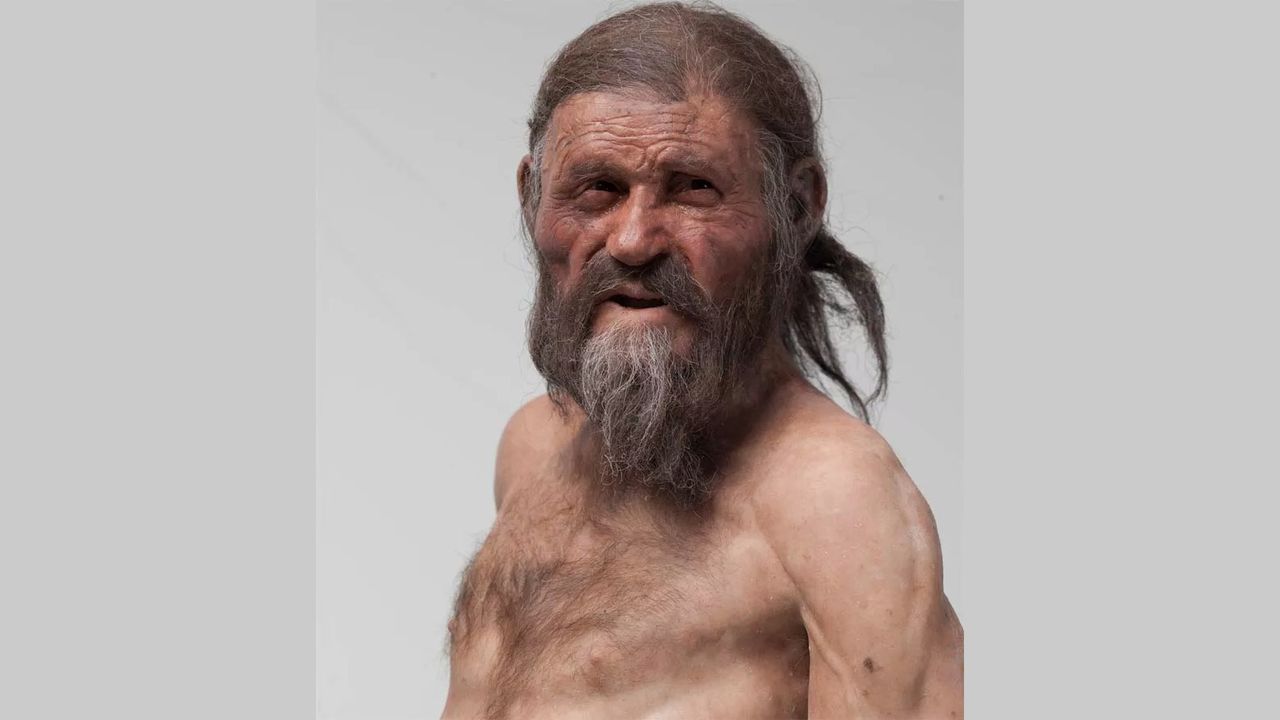
People from the past have left behind a treasure trove of clues about their lives — from enormous monuments to fragments of personal items, as well as the bones of the people themselves. But the people who left these clues are often a mystery. Now, thanks to modern scientific techniques and technology, researchers can accurately reconstruct what those people actually looked like, helping to bring long-dead people from history back to life.
Here, we take a look at some of the best reconstructions.
1. A warrior and his weapons
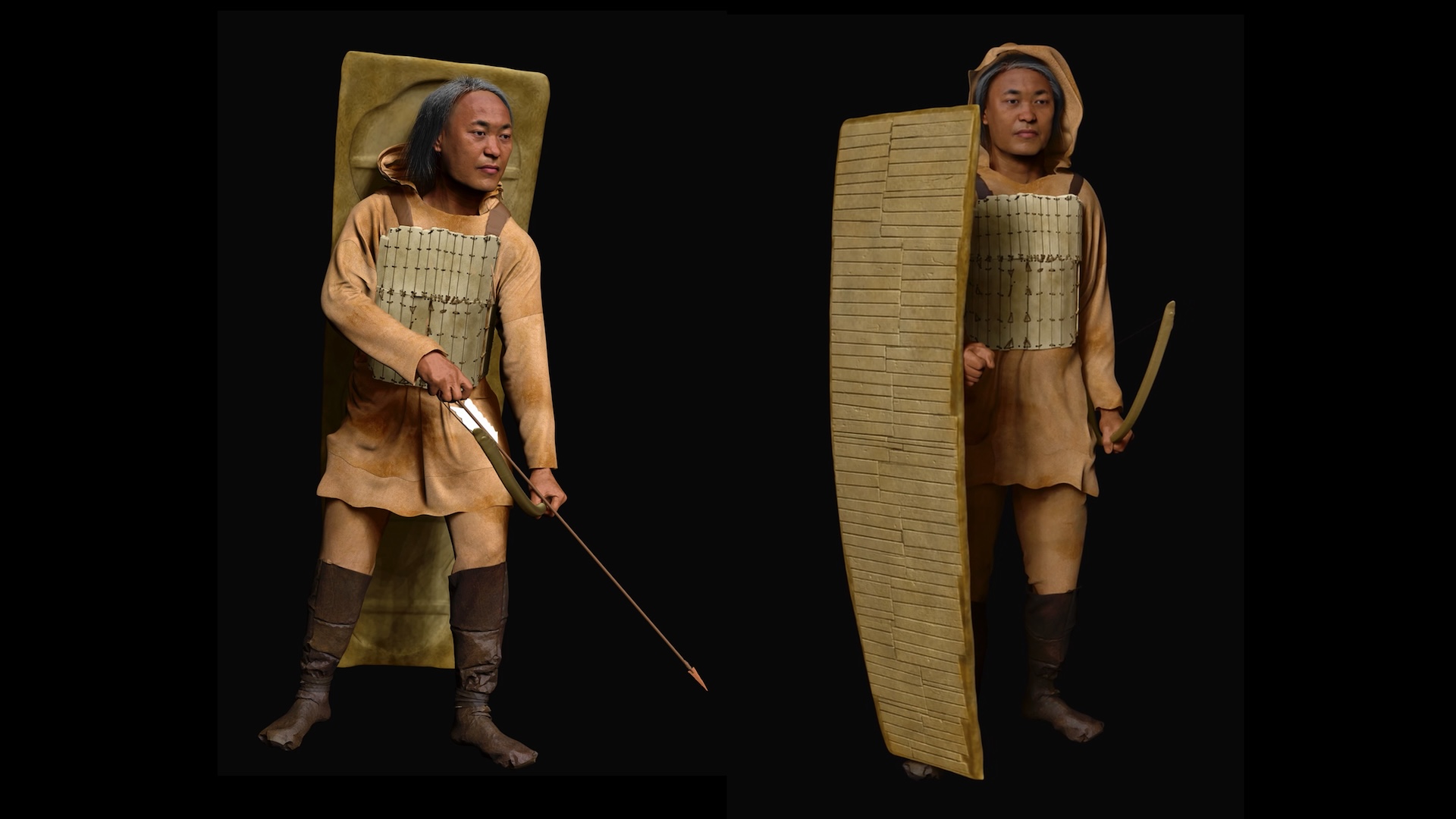
Researchers reconstructed the face, shield and weapons of a warrior who lived 4,000 years ago in what is now Siberia. Researchers who examined the late Stone Age man's remains estimate that during his lifetime, the warrior stood about 5 feet, 5 inches (165 centimeters) tall. He died between the ages of 40 and 50, a relatively advanced age for the late Stone Age. Healed injuries on the man's skeleton suggest his lifestyle was active and combative, which would explain the arrowheads and shield found in his burial.
2. 'Vampire' buried with a blade over her neck
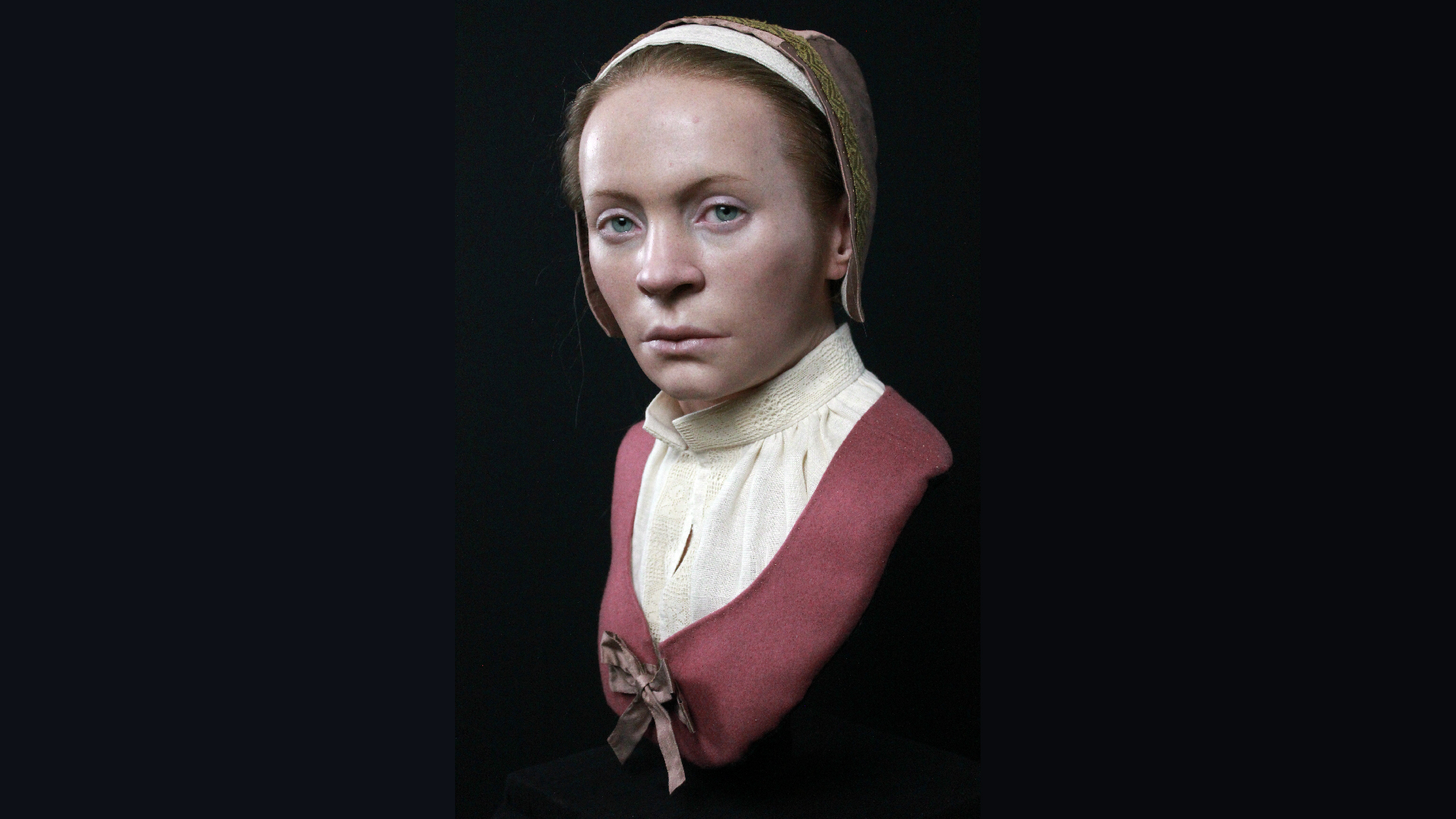
This stunning reconstruction shows a 17th-century woman with piercing eyes. Her skeleton was found with a sickle over her neck and a padlock around her big toe — a sign that villagers in Pien, Poland likely thought she was a vampire that could reanimate after death. Analyses of her clothes and remains revealed that this woman came from a wealthy family, but she wasn't local and was likely very ill. A chemical analysis of her remains suggests she came from Scandinavia and an anatomical examination showed she had several health conditions, including a painful cancer in her sternum.
"She was the odd one out in her community," Oscar Nilsson, a Sweden-based forensic artist who sculpted the woman's likeness, previously told Live Science in an email. "This might have caused the villagers of Pien to fear her, or sooner blame her for things that went wrong. And after her death they clearly were terrified of the possibility that she would arise and come back as a vampire."
3. Stone Age woman found in Belgium

Feathers adorn the reconstruction of this Stone Age individual — known as the Margaux woman — who lived about 10,500 years ago in what is now Belgium. She would have been part of a hunter-gatherer group. Margaux woman likely had blue or light eyes and a "medium-toned" skin complexion, a DNA analysis found. Her skin tone is surprising, as most Europeans from this time, including Cheddar Man, had dark skin.
4. Stone Age sisters who worked in brutal mine
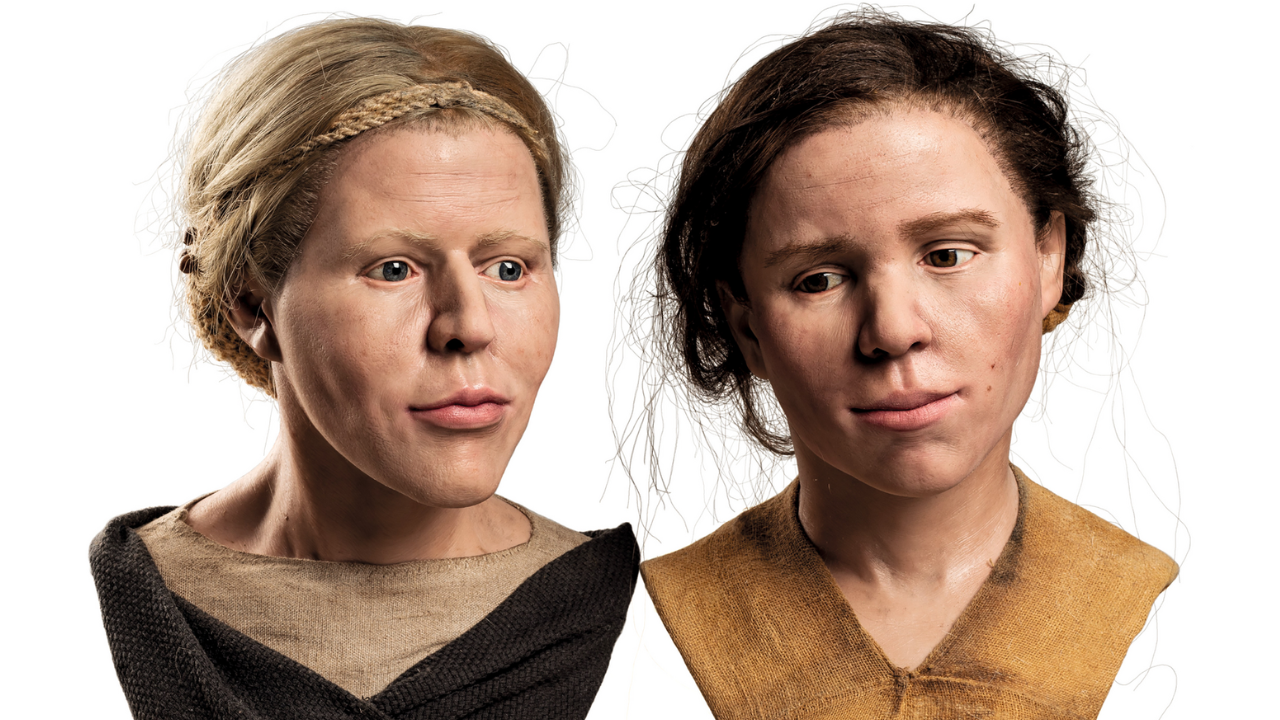
About 6,000 years ago, two Stone Age sisters worked in a brutal mine in what is now the Czech Republic. Now, we can see their "hyperrealistic" reconstructions, which were based on their remains. The two sisters were found buried one on top of the other in a mining shaft. The duo lived in a mining community and likely extracted heavy rocks that were turned into tools and weapons.
A few aspects of the burial are puzzling. The sisters were buried with a small dog, but it's unclear why. Even stranger, a newborn baby was buried on the older sister's chest, but the child isn't genetically related to either sister.
5. Our human relatives
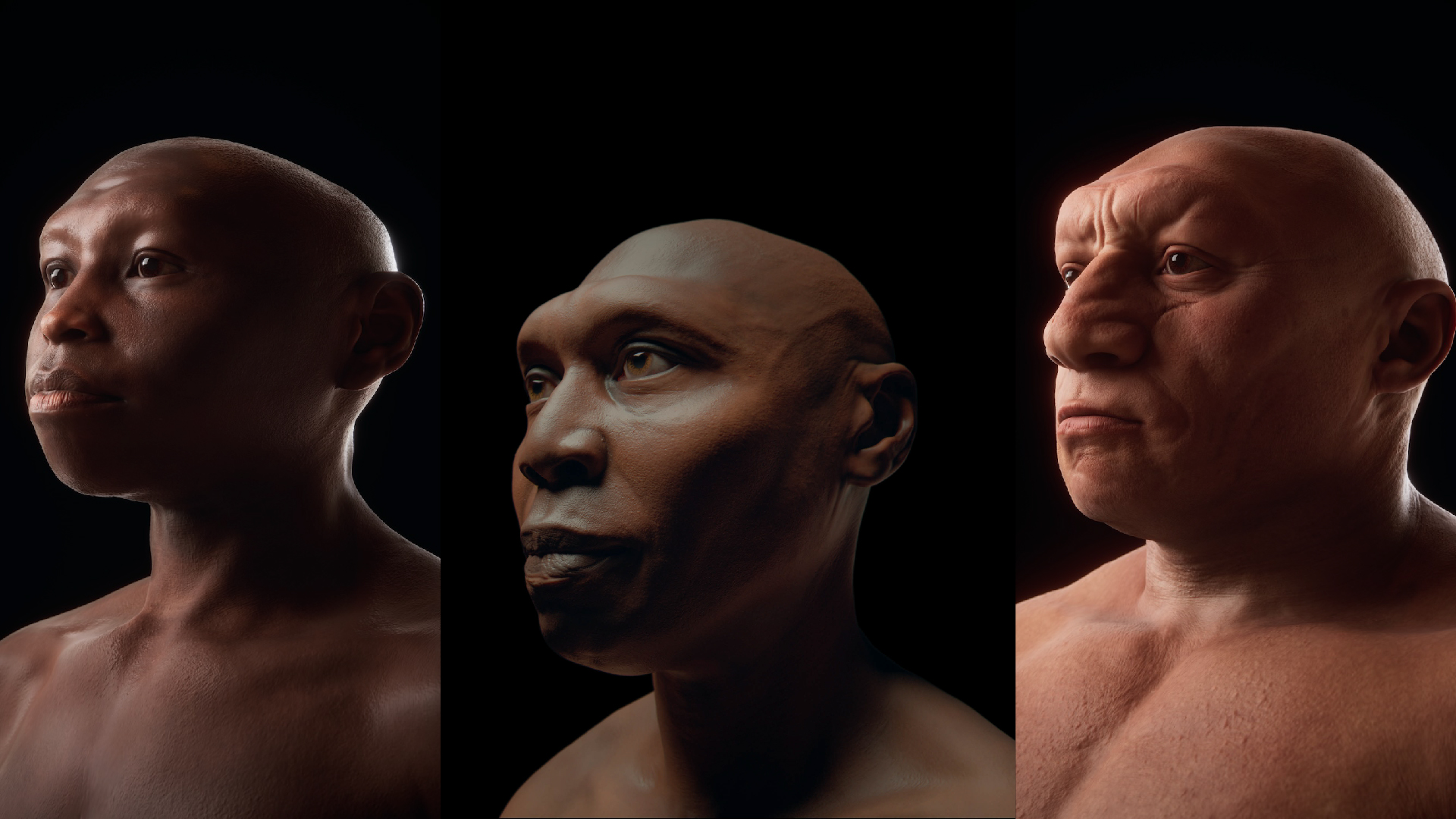
Homo sapiens are the only surviving human species, but Earth was once home to more than a dozen of our human relatives. Pictured above are facial reconstructions of Homo floresiensis (left), Homo erectus (middle) and a Neanderthal (right) that are part of a five-part documentary series called "Human." The series covers humanity's rise in Africa and our journey around the world, including out of Africa, throughout Oceania and across the Bering Land Bridge.
"These are the most scientifically accurate collection of hyper-real 3D models of human species ever put on TV that we know of," Ella Al-Shamahi, a paleoanthropologist and the series' presenter, said in a statement.
6. Neanderthal woman with a crushed skull
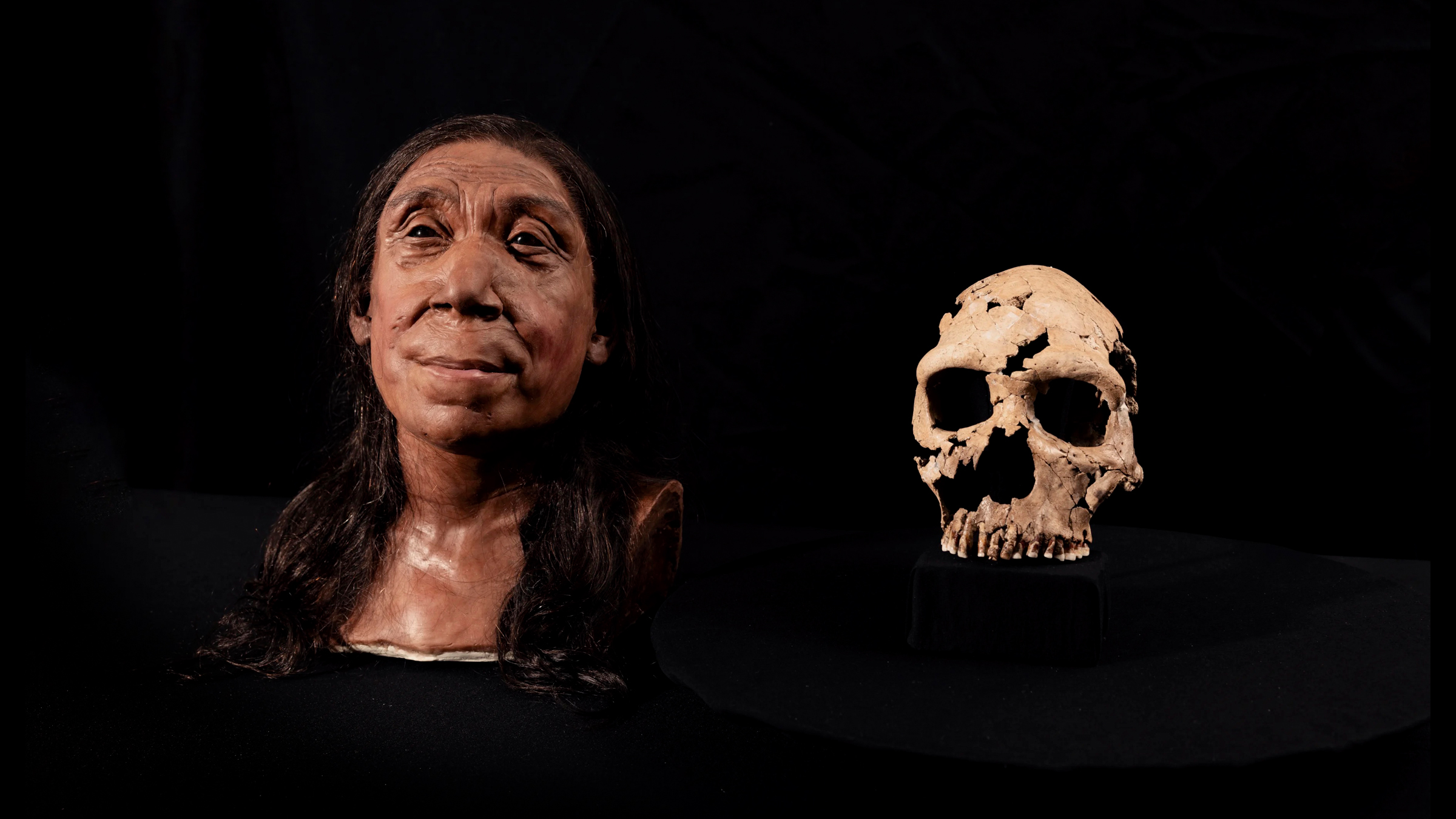
Researchers were able to create a reconstruction of a Neanderthal woman despite the fact that her skull was crushed into hundreds of pieces roughly 75,000 years ago. The researchers nicknamed the woman Shanidar Z., based on her remains being discovered inside Shanidar Cave in Iraqi Kurdistan. She likely died in her mid-40s and would have stood around 5 feet (1.5 m) tall, an analysis of her bones revealed. The reconstruction was featured in the Netflix series "Secrets of the Neanderthals."
7. Ancient Egyptian mummy found inside a high school
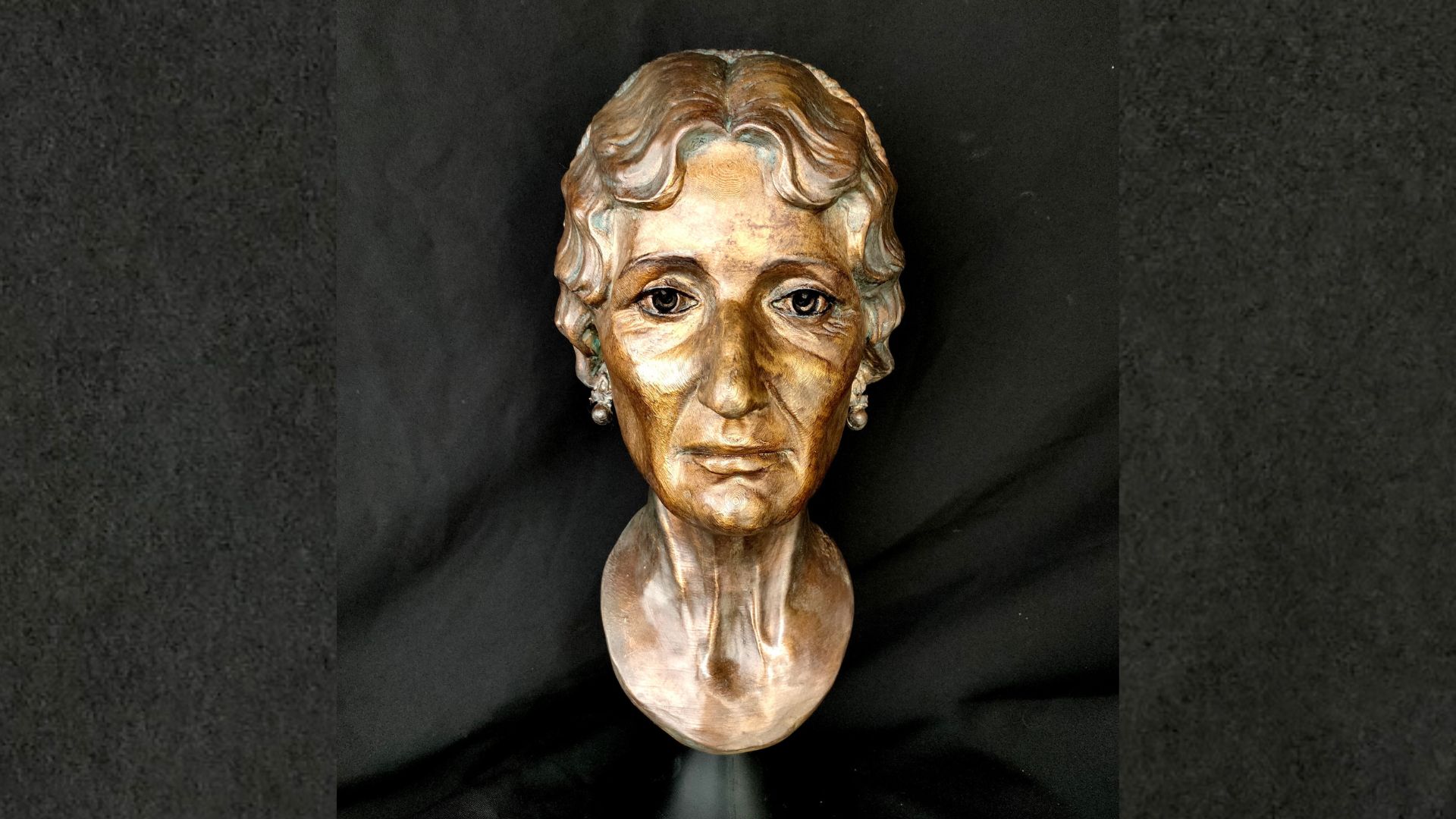
Archaeologists were surprised to find the mummy of an ancient Egyptian female displayed inside a high school library in New South Wales, Australia. Further analysis of the remains revealed that the woman would have been between 50 and 60 years old when she died, and flecks of gold leaf clinging to her skull hint that she lived during Egypt's Greco-Roman period (332 B.C. to A.D. 395), when gold leaf was a common ingredient used in the mummification process. A dig into historical records suggested that the mummy was gifted to the school either by a local doctor or a local Egyptologist in 1915.
8. Chinese Emperor Wu
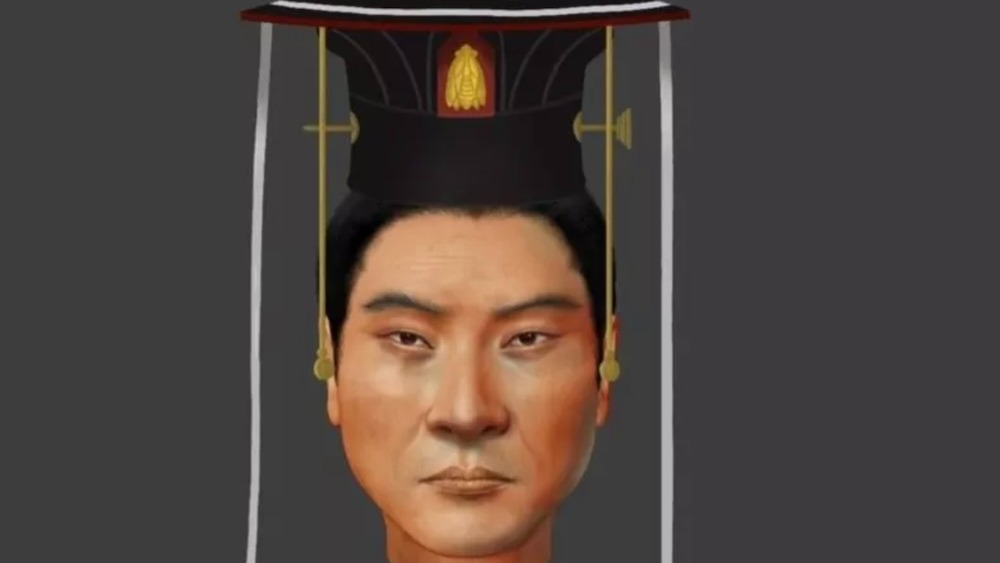
Researchers used DNA to create a facial reconstruction of the Chinese emperor, who ruled China's Northern Zhou dynasty until his death at age 36 in A.D. 560. Experts have long debated why he died at such a young age, and a genetic analysis revealed that he suffered from a stroke. The diagnosis was also confirmed with historical texts that claimed he had aphasia (a language disorder), drooping eyelids and an abnormal gait, which could all be symptoms of a stroke.
9. Zlatý kůň, the oldest modern human to be genetically sequenced
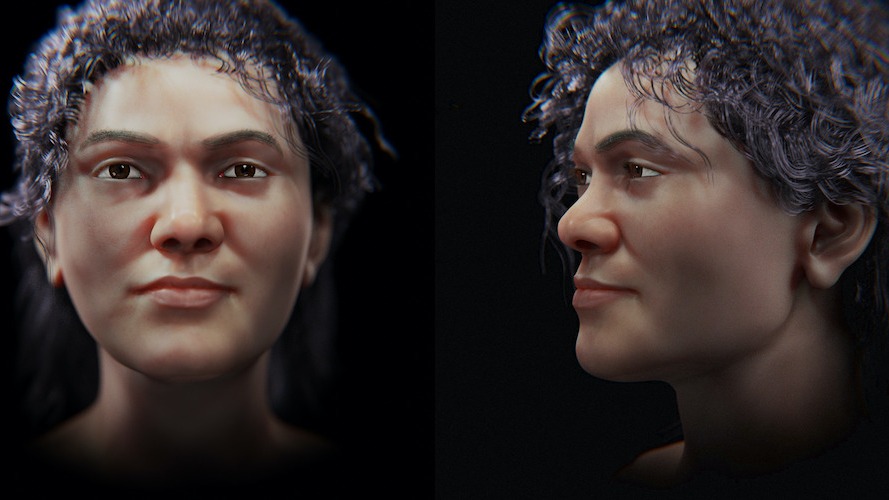
More than 70 years ago, archaeologists discovered a severed skull hidden inside a cave in Czechia (the Czech Republic). Fast forward to today, and researchers used computed tomography (CT) scans of the skull to piece it back together. The result is that of a woman with a strong jawline and a brain cavity that's larger than that of humans today. A DNA analysis revealed that she would have lived 45,000 years ago and her genome carried about 3% Neanderthal ancestry, making her a part of an early population of modern humans that likely mated with Neanderthals.
10. A crucified slave from Roman Britain
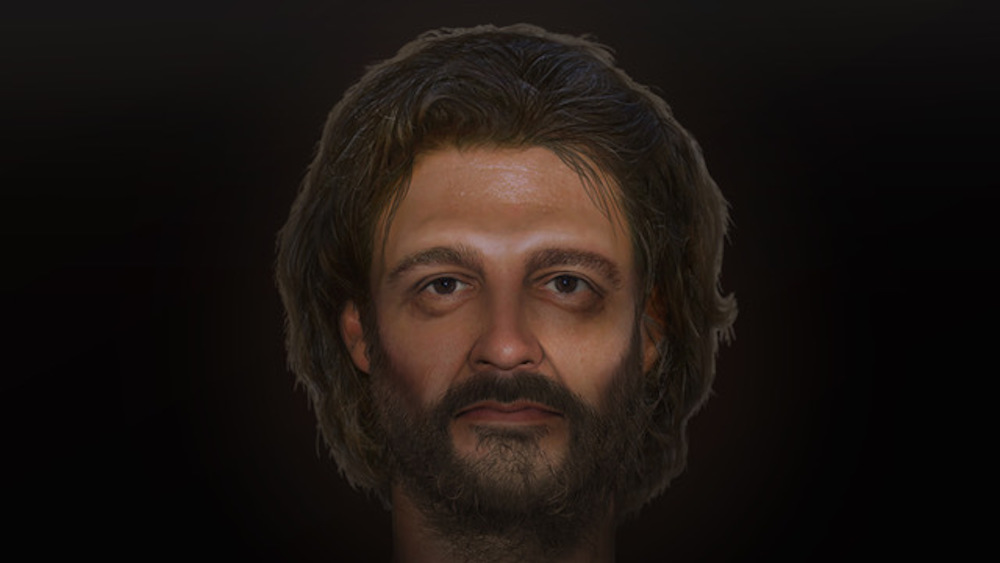
In 2017, when archaeologists discovered the skeleton with a nail hammered into its heel in England, they realized that what they were looking at was a former slave. A DNA analysis concluded that the man was between 25 and 35 years old when he died about 1,700 years ago. His leg bones were also abnormally thin, which hinted that he may have been chained to a wall for a long time, meaning his movement was likely restricted.
11. 'Juanita,' also known as the 'Ice Maiden'

Archaeologists took scans of a young Incan girl's frozen mummified remains, which they found on the summit of a mountain in Peru, and shared them with a forensic artist who created a facial approximation. Dubbed the "Ice Maiden" and "Juanita" by researchers, the life-like reconstruction contains real human hair and clothing similar to what she was wearing when she died 500 years ago.
12. Bronze age woman crouching in tomb
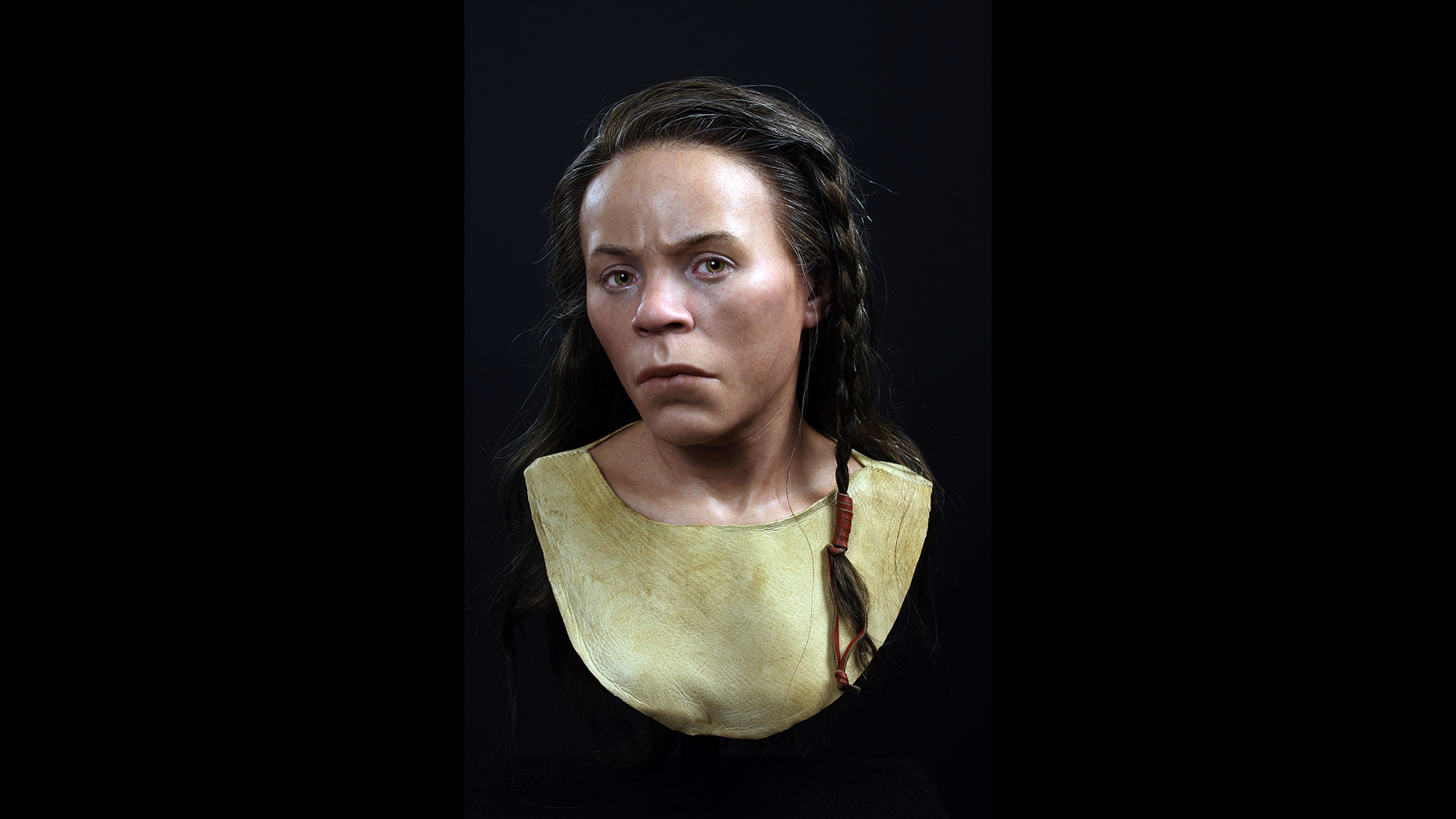
In 1997, archaeologists in Scotland discovered the skeleton of a Bronze Age woman buried in a crouched position inside a stone-lined grave. While little is known about the woman, whom they nicknamed "Upper Largie Woman" after the quarry where she was found, they worked with a forensic artist who created a facial reconstruction using a 3D printed skull and clay.
13. Medieval dwarf from Poland
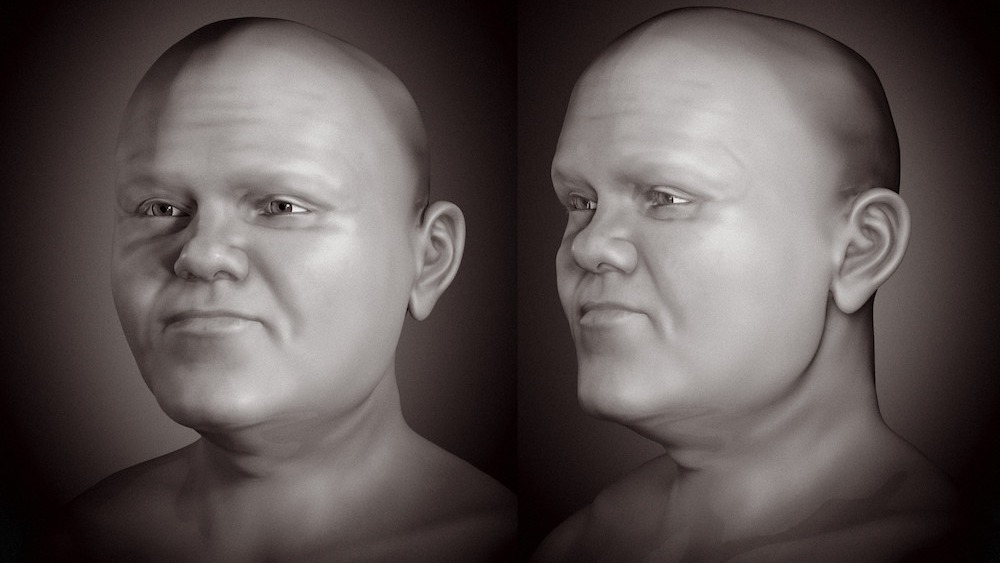
When archaeologists reviewed a 3D analysis of the skeletal remains of a medieval man found in Poland, they realized that he had two types of dwarfism. A forensic artist was able to bring the man, who would have lived sometime between the ninth and 11th centuries, to life. The final approximation shows a man with a larger-than-average head, which researchers said is a common characteristic of people with skeletal dysplasia, a rare genetic disorder that causes abnormal development of bones, joints and cartilage.
14. Lonely ice age boy
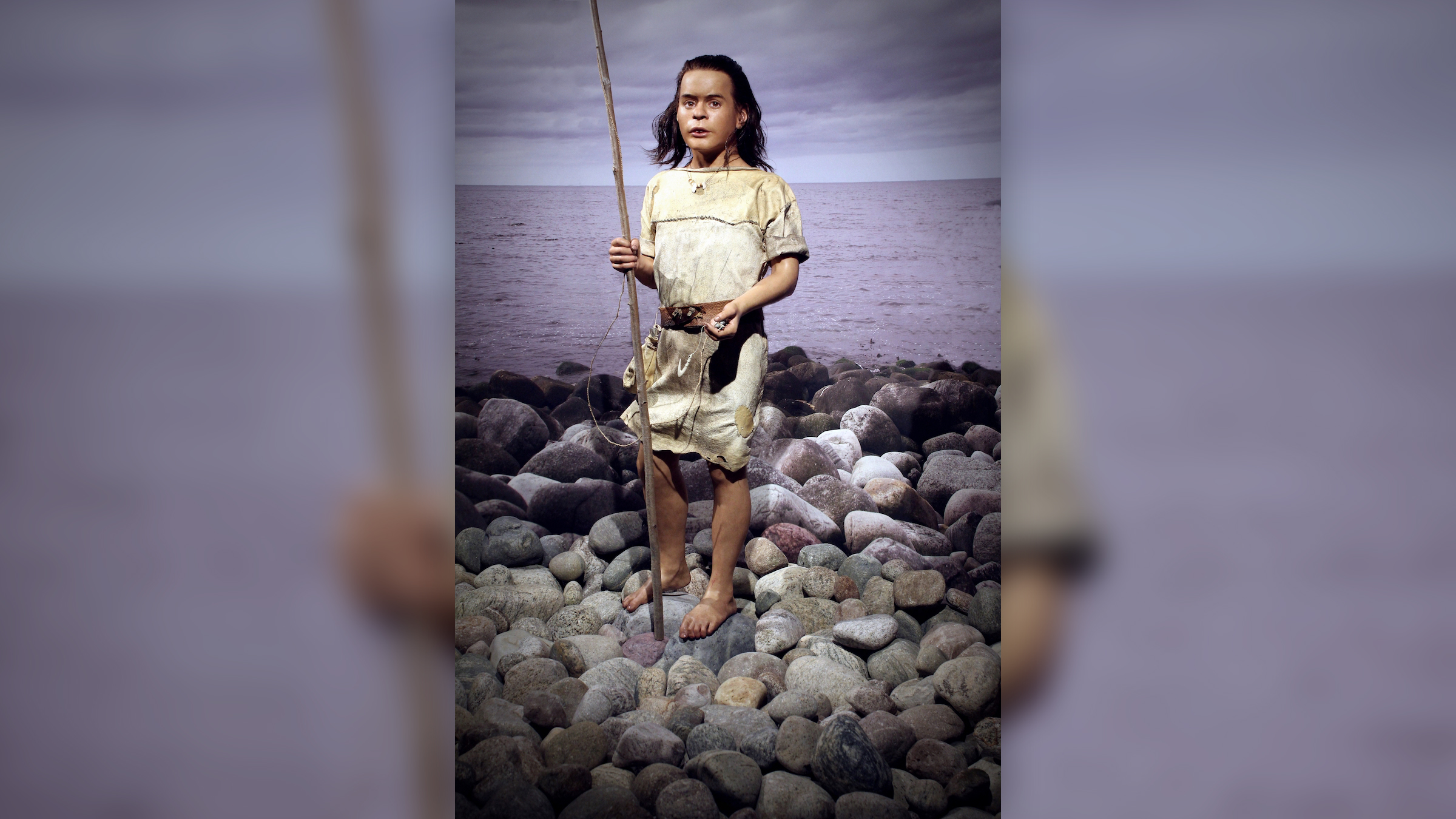
Found more than a century ago, the 8,300-year-old remains of Vistegutten, Norwegian for "the boy from Viste," helped inform a 3D reconstruction of his body, which is now on display at the Hå Gamle Prestegard museum in southern Norway. Vistegutten was about 15 years old when he died, possibly by himself in a cave. The teenager had scaphocephaly, a condition in which his skull fused too early, an analysis found.
15. Vasa warship victim
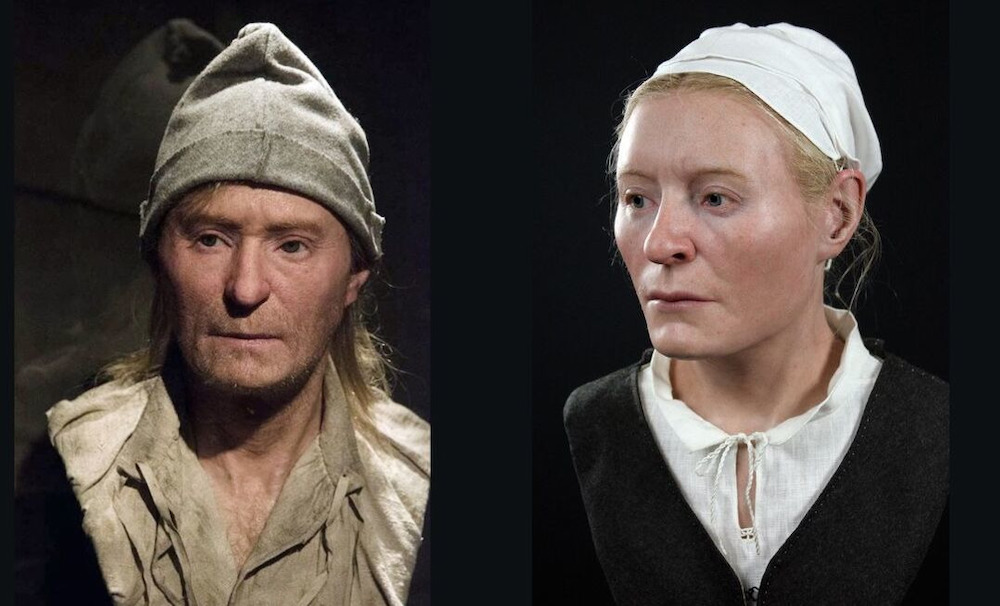
In 1628, a Swedish warship known as the Vasa sank on its maiden voyage. Among the victims were G, whom modern researchers initially thought was a male they named Gustav. In 2006, a 3D facial reconstruction showed Gustav at 45, his estimated age at death. However, a recent DNA analysis revealed that G was actually female. Researchers named her Gertrude, and a new examination showed that she was likely 25 to 30 years of age when she died and had blue eyes, blonde hair and pale skin. A 2023 reconstruction shows her in the red hat she was likely wearing when the warship sank.
16. 'Ava,' a Bronze Age woman
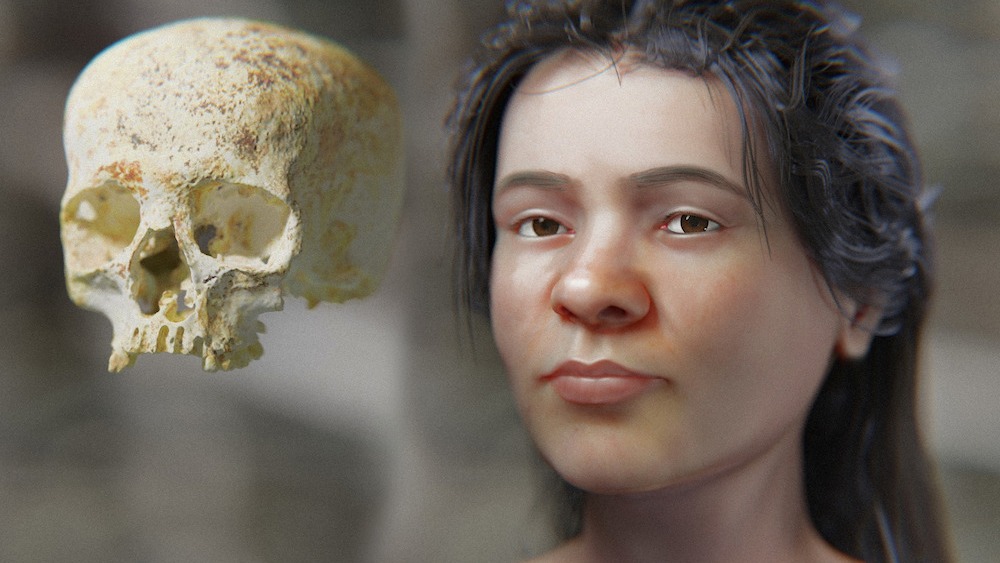
When archaeologists reviewed a 3D analysis of the skeletal remains of a medieval man found in Poland, they realized that he had two types of dwarfism. A forensic artist was able to bring the man, who would have lived sometime between the ninth and 11th centuries, to life. The final approximation shows a man with a larger-than-average head, which researchers said is a common characteristic of people with skeletal dysplasia, a rare genetic disorder that causes abnormal development of bones, joints and cartilage.
Archaeologists used forensic science to gather clues about this mysterious Bronze Age woman buried in Scotland whom they nicknamed "Ava." Through DNA analysis, they determined that she most likely had brown eyes, black hair and a darker skin tone while measurements of her tibia (shinbone) showed that she was tall and stood approximately 5 feet, 7 inches (1.71 meters). Using this data along with scans of Ava's 3,800-year-old skull, artists created a facial approximation of what she may have looked like.
17. King Tut
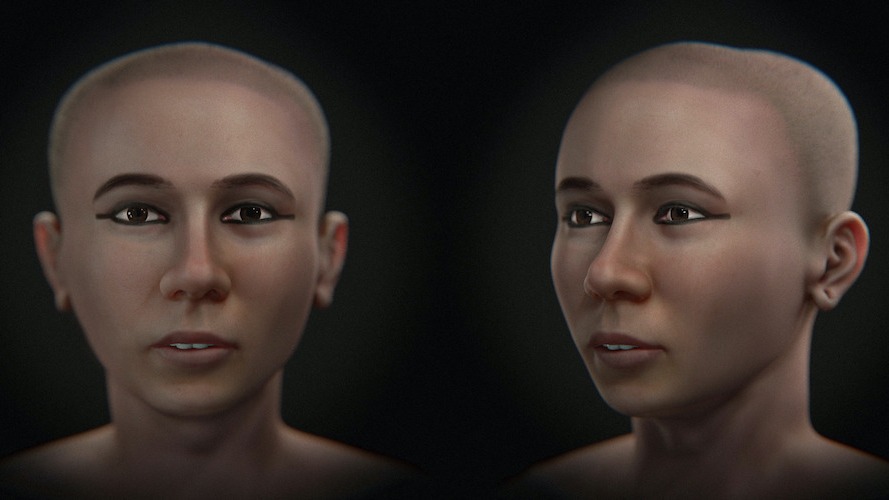
Over the years, several facial approximations have been made of the ancient Egyptian pharaoh Tutankhamun, however the latest version offers new insight into the historical figure's unique facial features. Researchers used CT (computed tomography) scans as well as X-rays of the young king's skull, and through analysis they determined his skull was not only slightly longer than average, but that he also had an exceedingly large brain volume. For example, the average man has a brain volume of approximately 75 cubic inches (1,234 cubic centimeters), but Tut's was 87 cubic inches (1,432 cubic cm).
18. 7th-century 'elite' girl
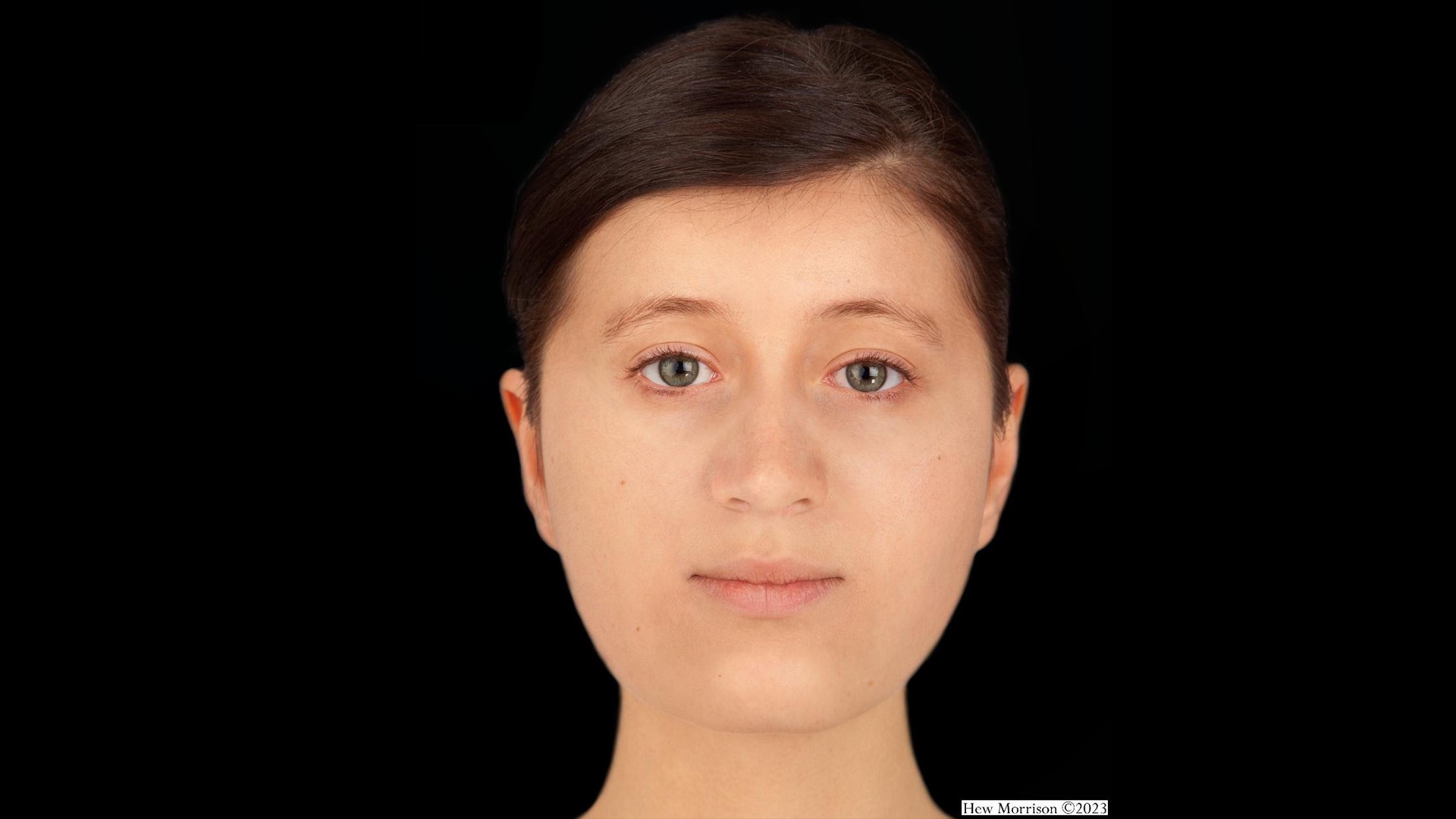
The mystery surrounding a 16-year-old girl, who was buried in England lying in a wooden bed wearing a gold cross studded with rubies, has eluded archaeologists since her discovery in 2011. But now a new facial reconstruction offers insight into the appearance of the Anglo-Saxon teen and early Christian convert.
19. The 'Hobbit,' an extinct human relative
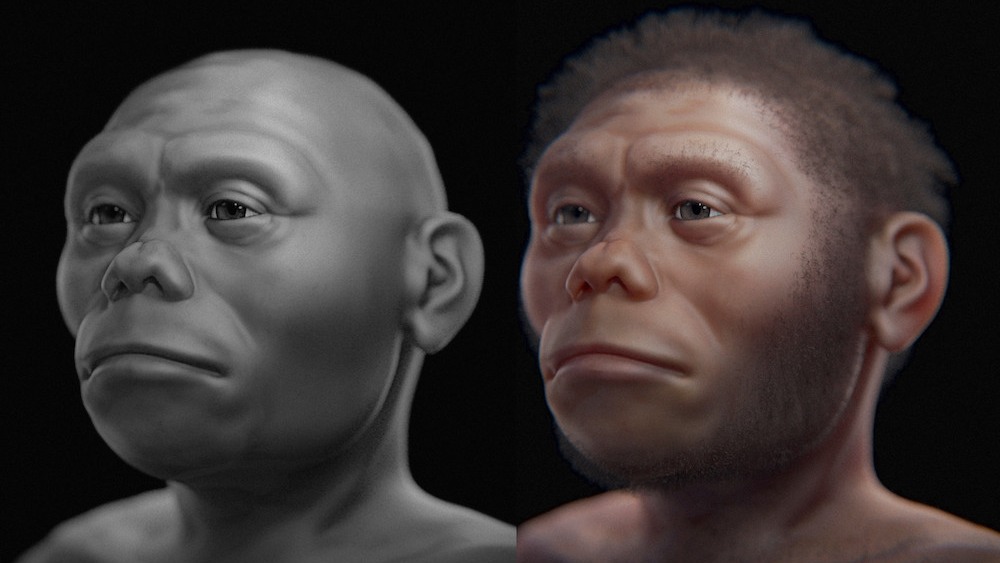
Archaeologists discovered the remains of an individual classified as Homo floresiensis, a smaller offshoot of Homo erectus, an extinct human ancestor, inside a cave in Indonesia in 2003. Standing only 3 feet, 6 inches (106 cm), they dubbed her the "hobbit." To make the facial approximation, researchers used scans of the individual's skull along with those of modern-day humans and chimps, all of which were virtually deformed.
20. Czech Republic Stone Age woman
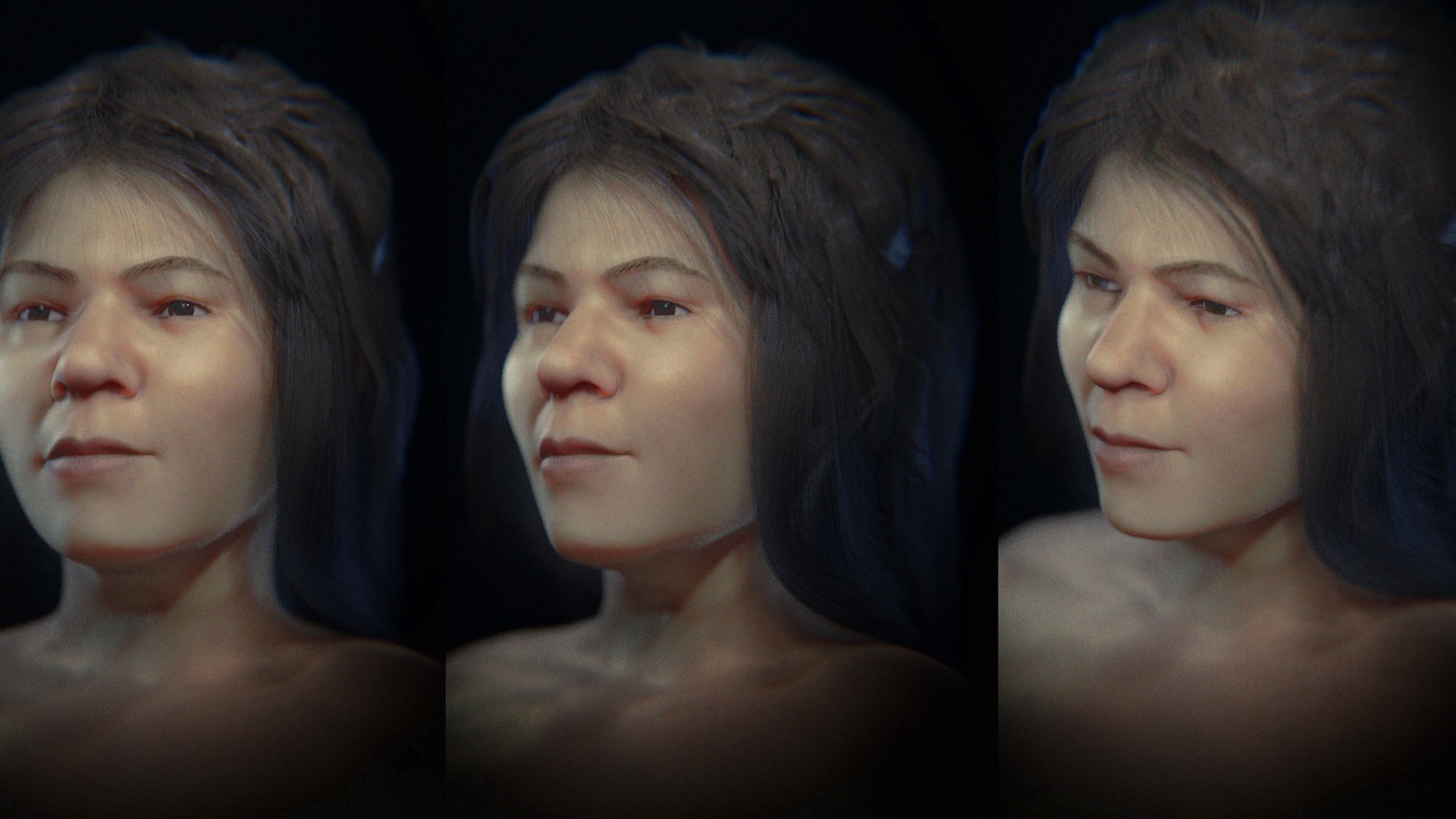
Initially incorrectly identified as male, a skull found buried inside a cave in Mladeč in the Czech Republic turned out to belong to a 17-year-old female from the Stone Age, who lived around 31,000 years ago. Researchers believe she lived during part of the upper Paleolithic period known as the Aurignacian, and she is one of the oldest Homo sapiens found in Europe.
21. Bronze Age woman from Spain
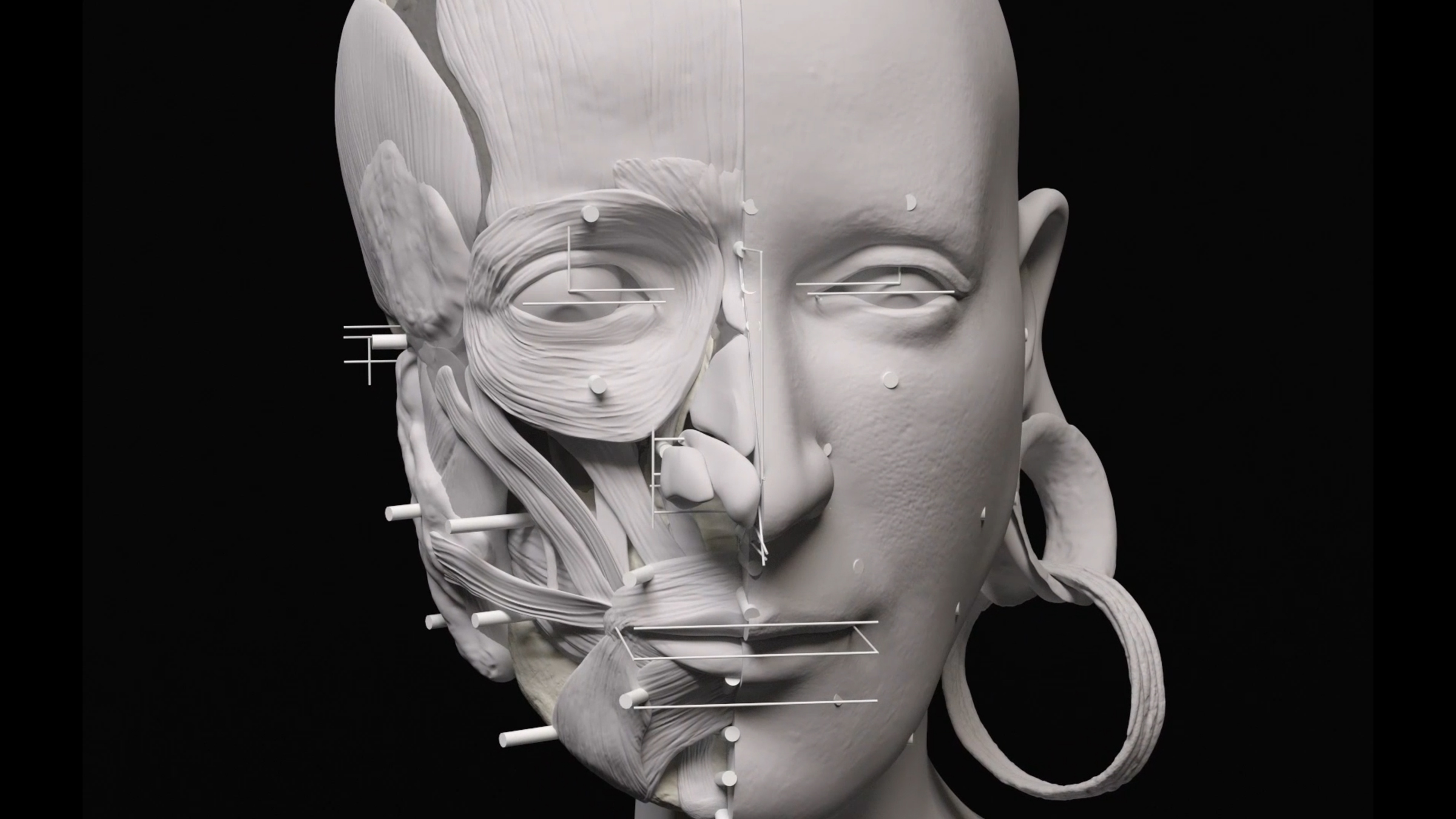
Archaeologists from the Autonomous University of Barcelona discovered the remains of a man and woman from the Bronze Age, who were buried together in a ceramic pot at the La Almoloya site. A scientific illustrator created a digital reconstruction of the woman using the woman's partial skull and jewelry — in particular a diadem (silver crown) to figure out her head measurements.
22. Stone Age woman found in Sweden
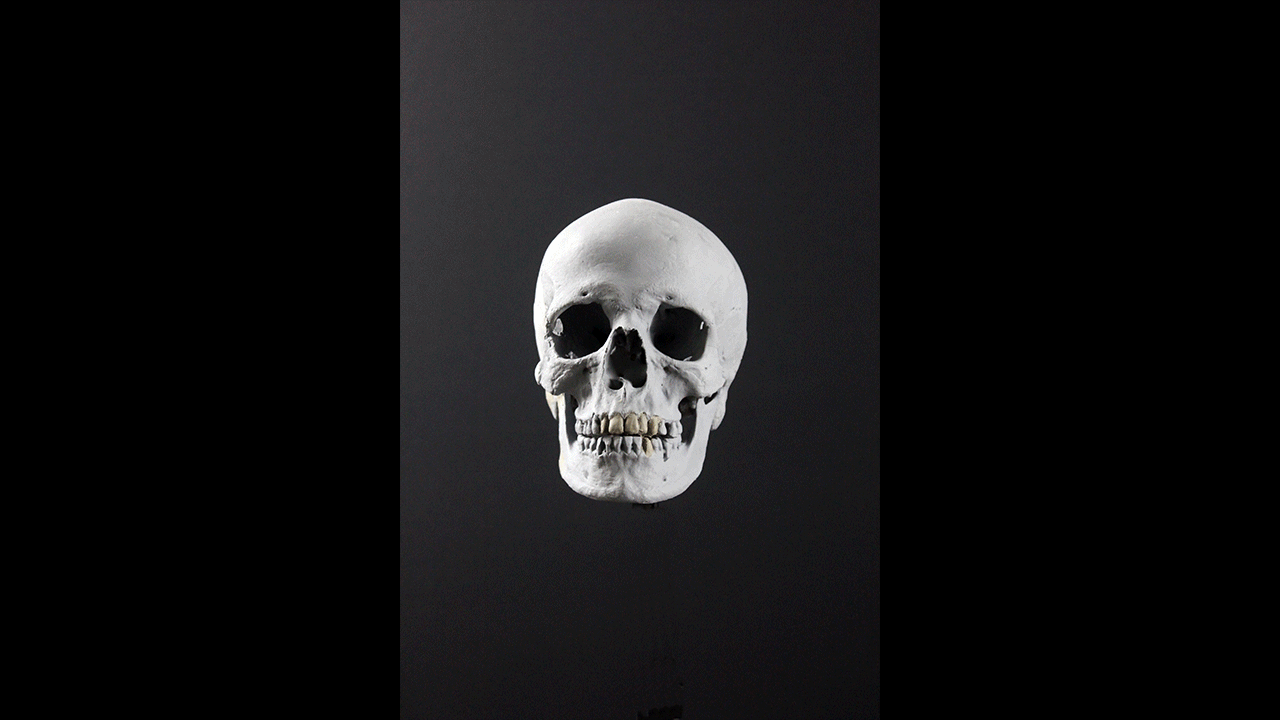
The skeletal remains of this Neolithic woman in her late 20s were found during the construction of a road in Lagmansören, Sweden. A forensic artist spent over 350 hours creating her likeness, basing the reconstruction on the scanned skull and on what we know about migration into ancient Scandinavia.
23. Bronze Age Bohemia
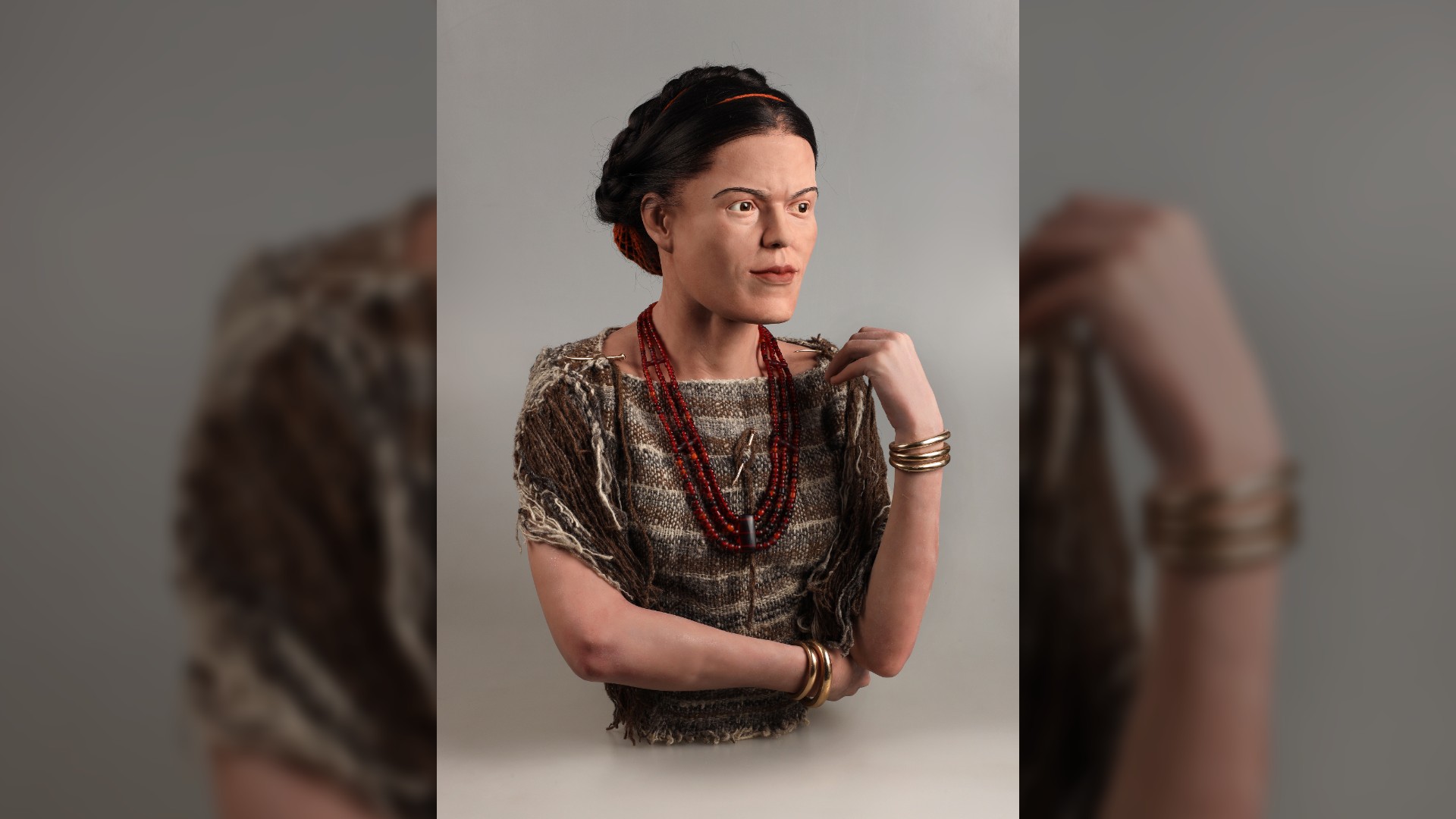
The bones of this Bronze Age woman, believed to have lived between 1880 B.C. and 1750 B.C., were found in a graveyard near the village of Mikulovice in Bohemia, the Czech Republic. This wealthy woman was part of the Únětice culture, known for their metal artifacts, so it was unsurprising that she was found buried with five bronze bracelets, two gold earrings and a three-strand necklace of more than 400 amber beads.
24. Penang woman from the New Stone Age
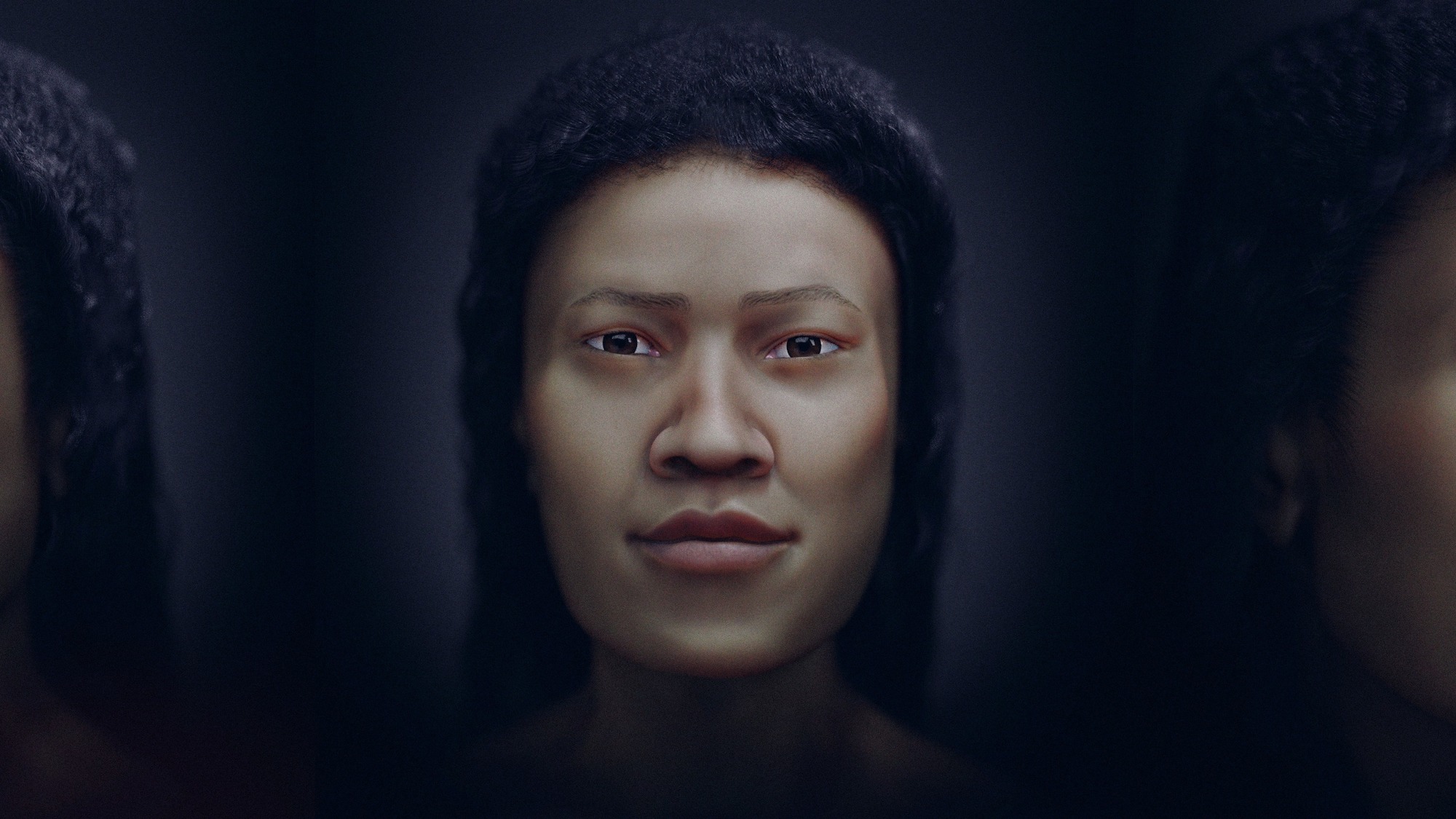
Using a combination of 3D imagery of modern-day Malaysians and CT (computed tomography) scans, researchers created a virtual face approximation of this 40-year-old woman who lived during the Neolithic period, or New Stone Age. Discovered during a dig at the Neolithic site Guar Kepah in Penang, northwest Malaysia, radiocarbon dating of shells found by the remains of the "Penang woman" suggests she lived about 5,700 years ago.
25. Medieval Scottish woman

Thanks to modern-day forensic science and technology, researchers were able to glimpse into life in medieval Scotland by creating a reconstruction of this medieval woman, who was one of three skeletons found in a medieval crypt in Scotland. Chris Rynn, the forensic craniofacial anthropologist who made this lifelike facial reconstruction, said that this was "the most symmetrical skull" they had ever worked on.
26. Medieval Scottish priest and bishop
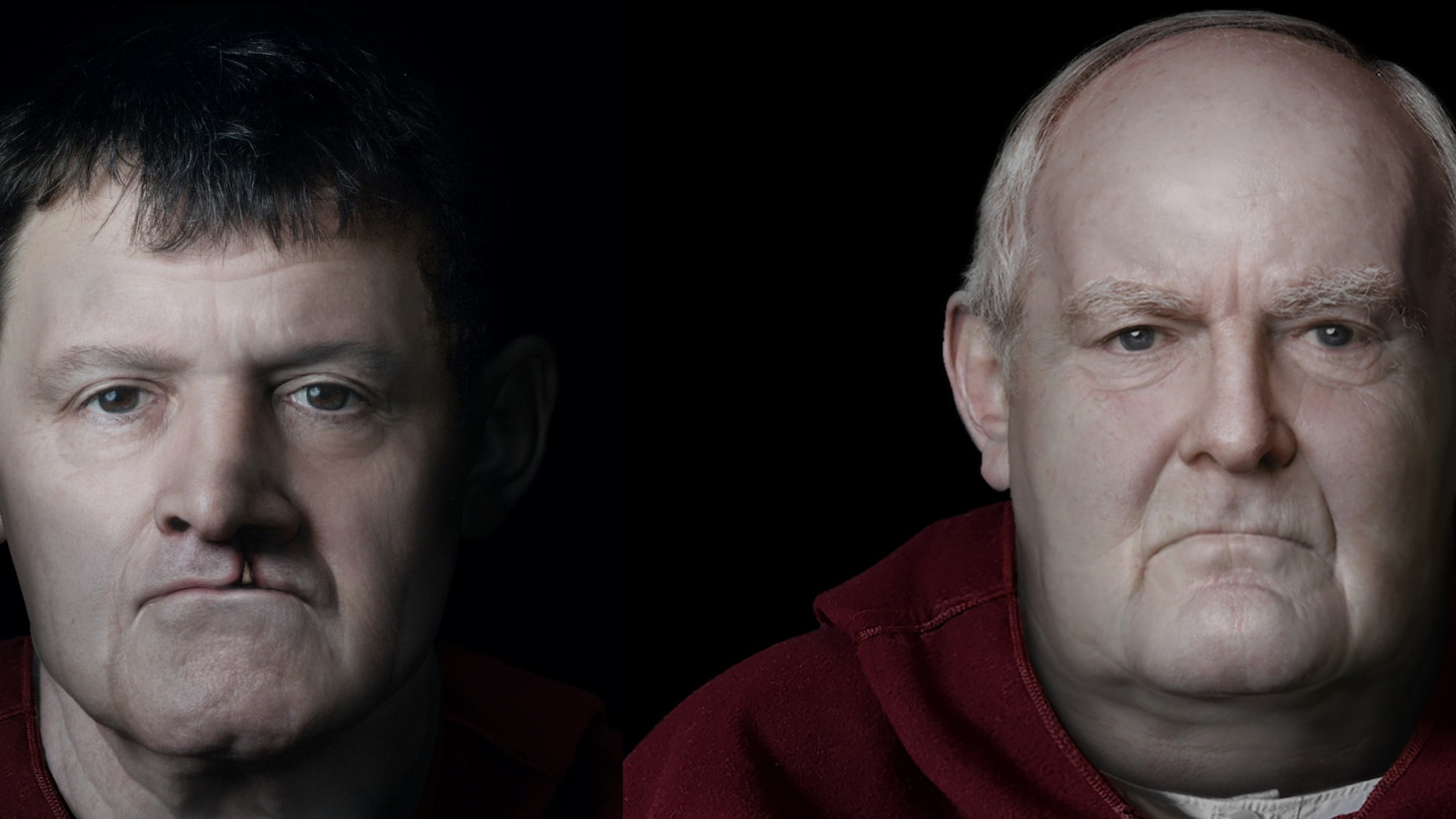
The remains of these two men were found in the same medieval crypt in Scotland as the previous woman. Starting with a 3D scan of each skull, Rynn made these incredible lifelike facial reconstructions of this priest and bishop, right down to the cleft lip and palate of the priest.
27. Young Neanderthal man
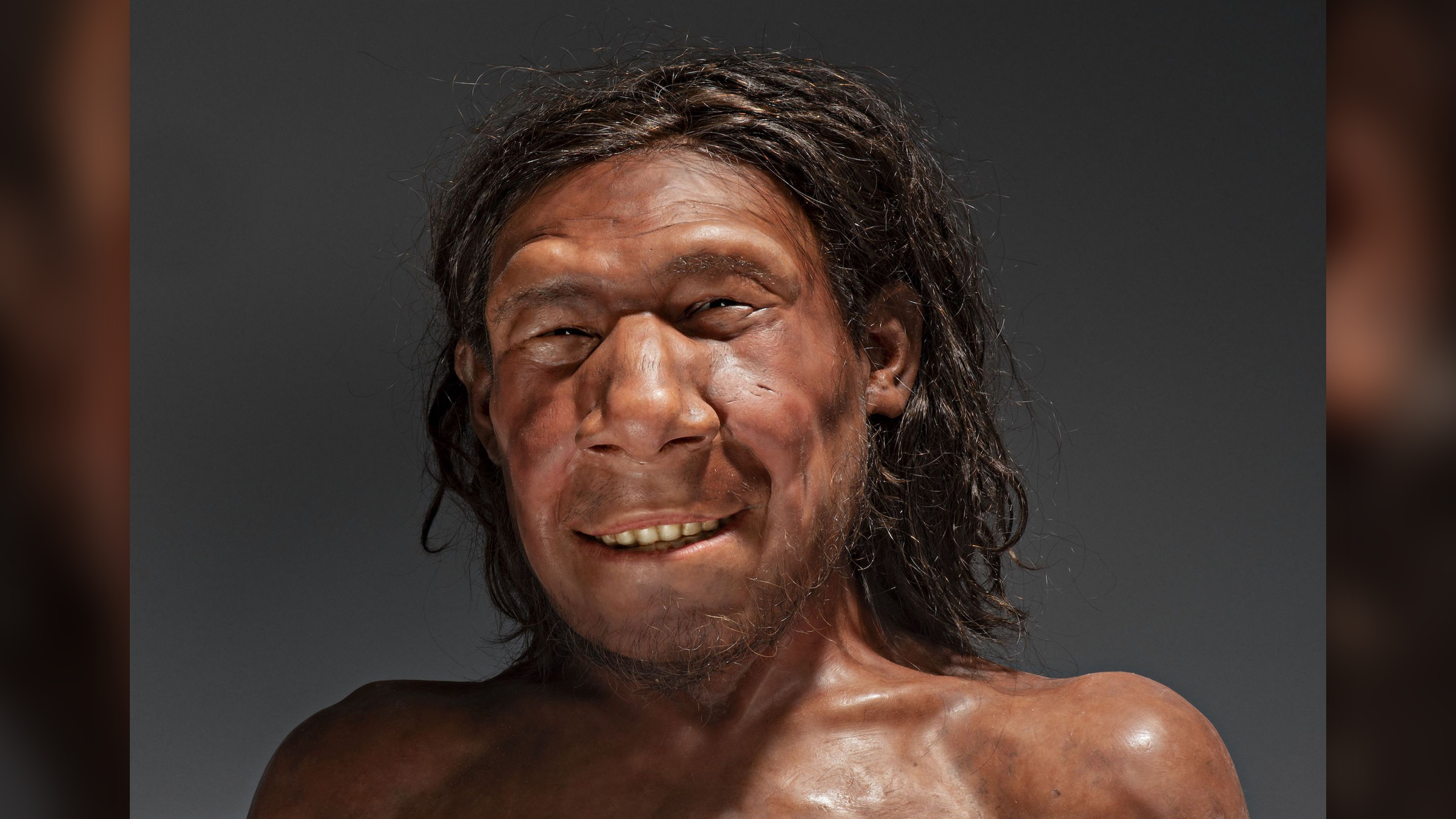
Around 70,000 years ago this young Neanderthal man roamed an area known as Doggerland, off the coast of the Netherlands. Using just a piece of skull found at the bottom of the North Sea, a paleo-anthropological artist was able to conjure up this bust of "Krijn," right down to the tumor above his right eyebrow.
28. Three ancient Egyptians
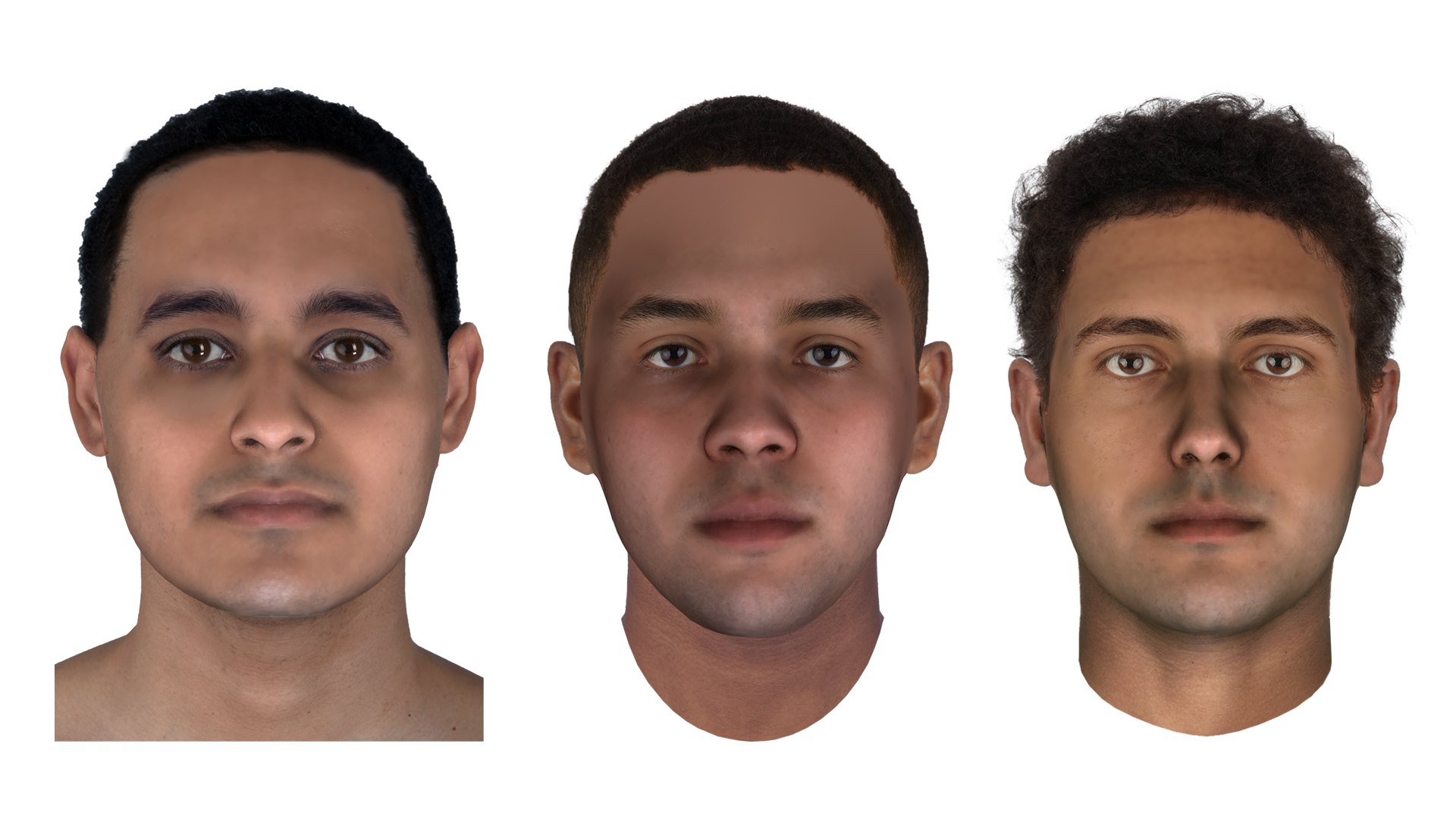
The faces of three men who lived more than 2,000 years ago in the ancient Egyptian city of Abusir el-Meleq are brought back to life in this reconstruction. DNA data was extracted from their mummies and used in a process called forensic DNA phenotyping, which uses genetic analysis to predict the shape of facial features and other aspects of a person's physical appearance. This information helped scientists reconstruct the three men at age 25.
29. King Tut's father revealed
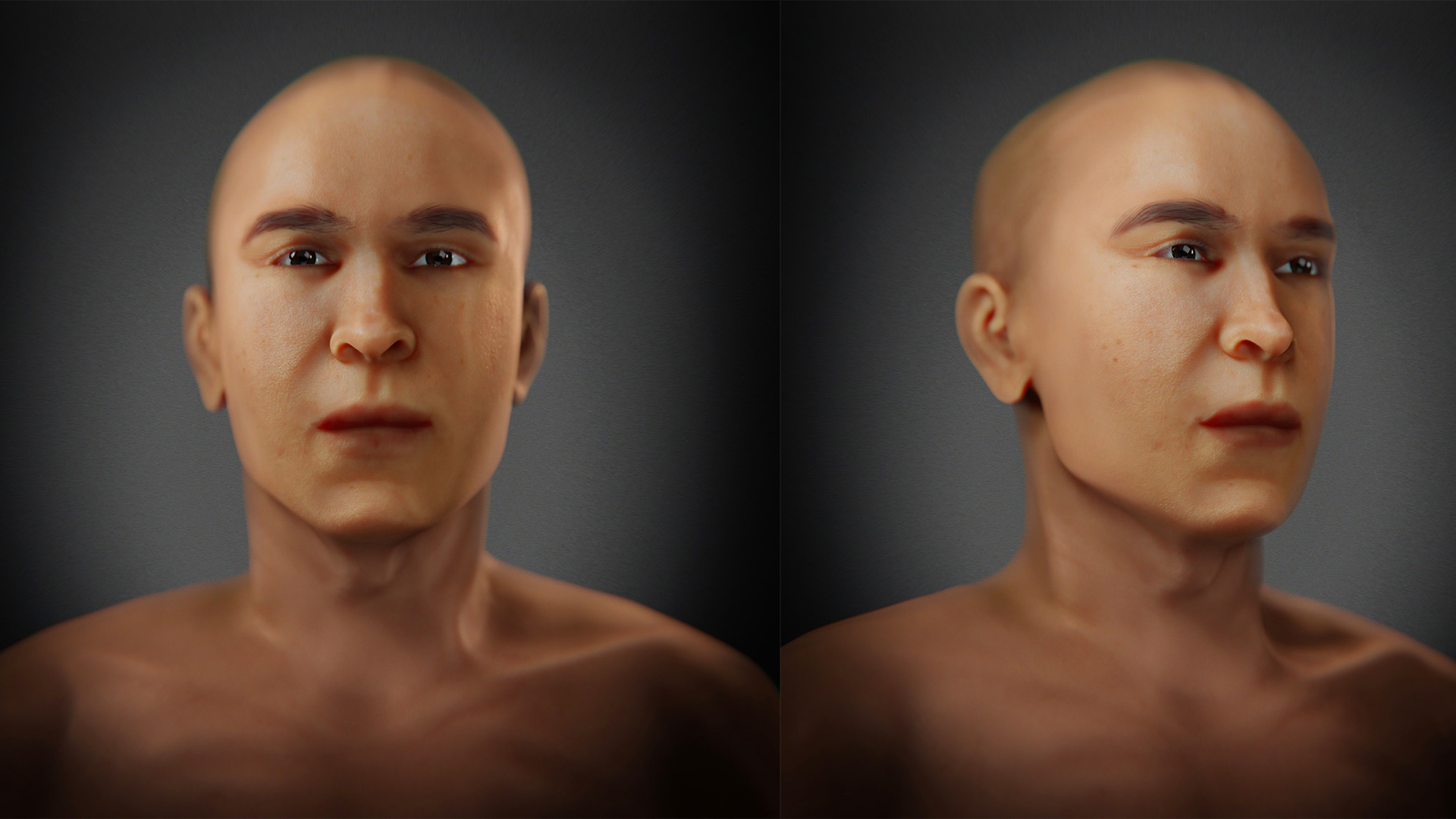
This is the face of a pharaoh — possibly Akhenaten, King Tut's father, who reigned from 1353 B.C. to 1335 B.C. Adornments such as hair or jewelry have been purposely omitted in order to focus on the individual's facial traits. The reconstruction is based on mummified remains found in the Valley of the Kings.
30. Stone Age man on a spike
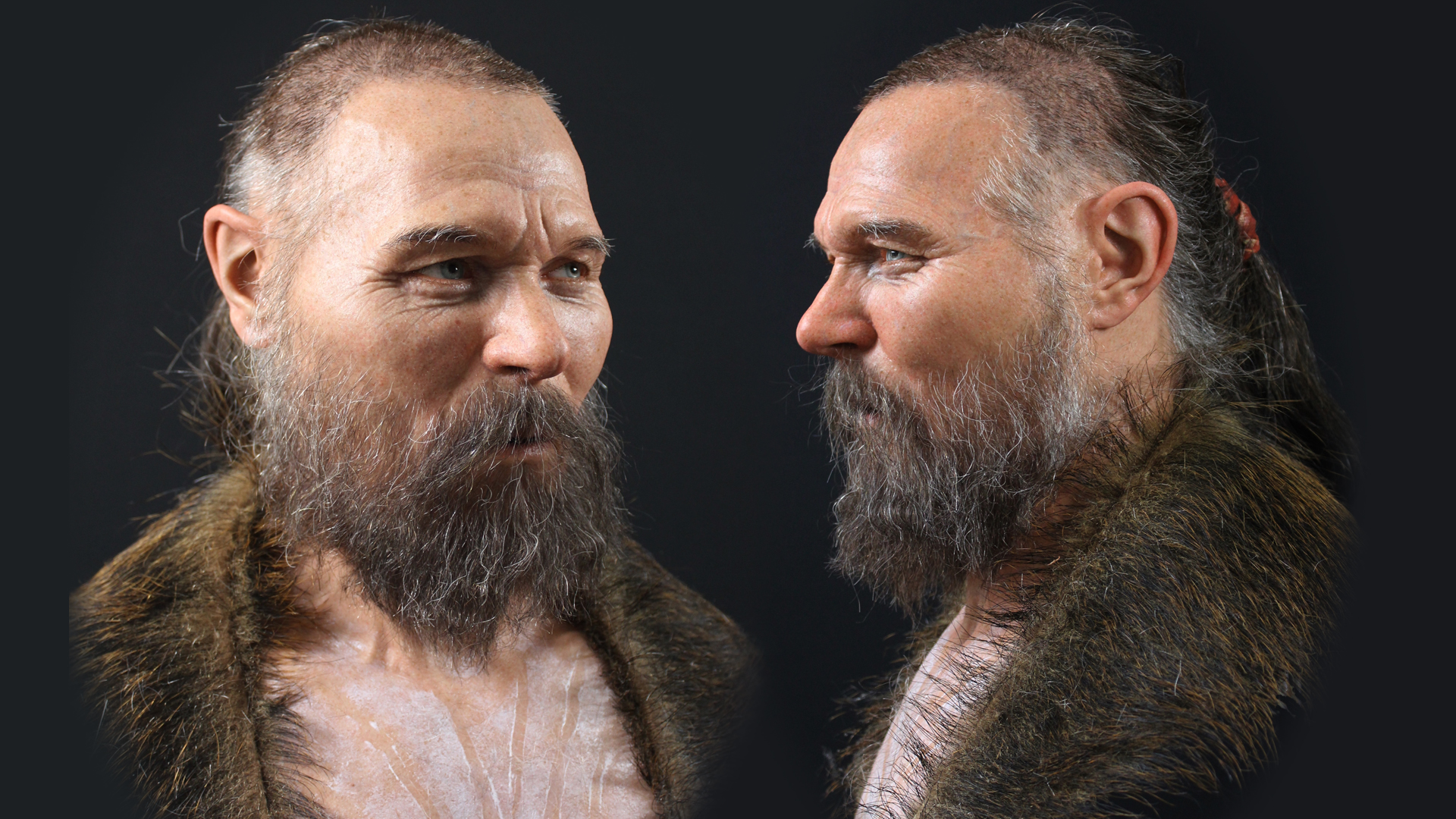
The skull of this Mesolithic man, who died 8,000 years ago when he was in his 50s, was found impaled on a stake at the bottom of a small lake in what is now Motala, a municipality in eastern-central Sweden. Although this man was found without his jaw, a forensic artist was able to reconstruct this by taking measurements from the rest of the skull.
31. 18th-century 'vampire'
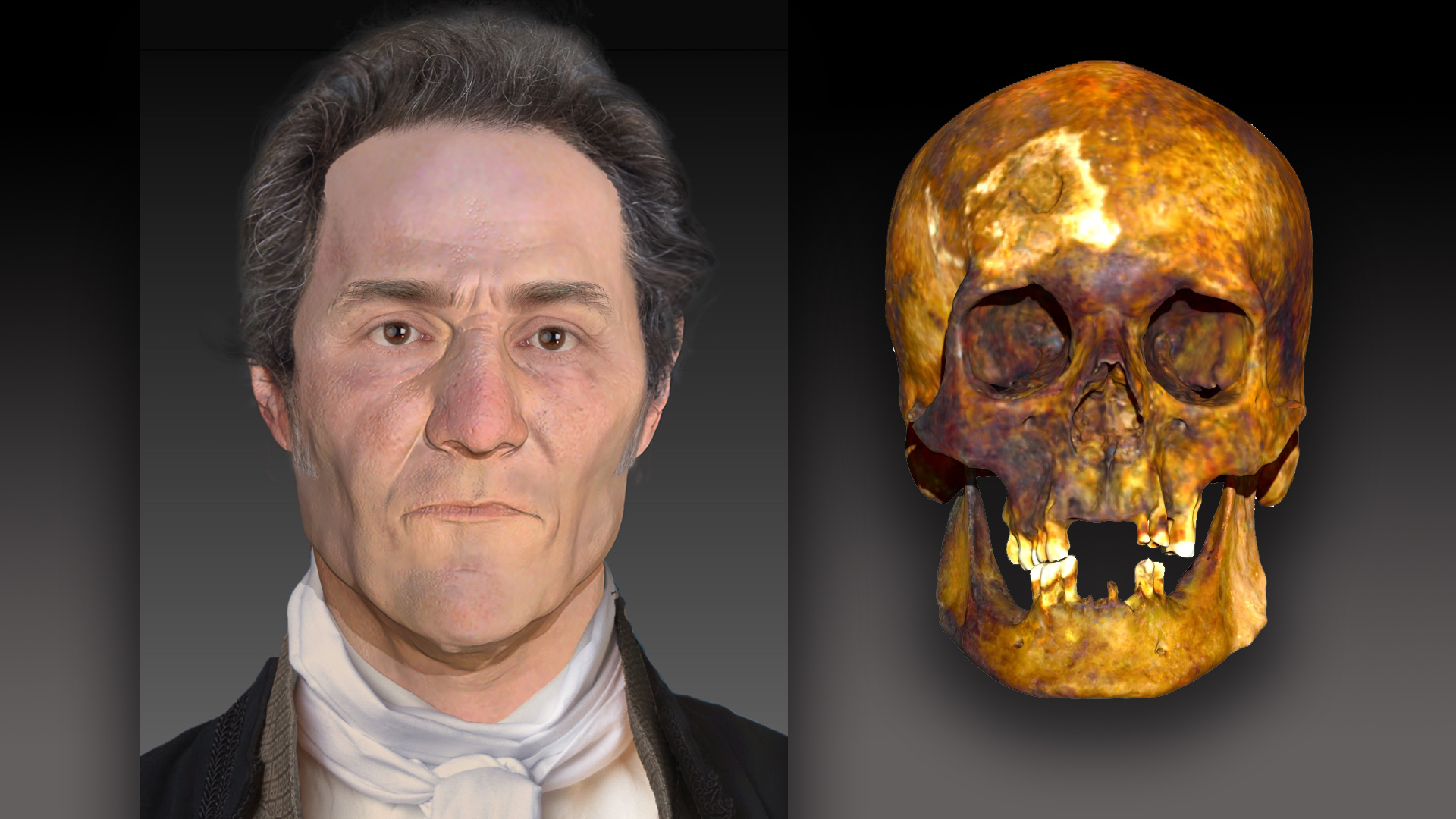
Buried in Griswold, Connecticut, in the late 18th century, the remains of this 55-year-old man were found with his femur bones crossed over the chest — a sign indicating that locals thought this man was a vampire. Historically, people believed that those who died of tuberculosis, like this man, were vampires, but as you can see, no fangs here.
32. 18-year-old Avgi from Greece
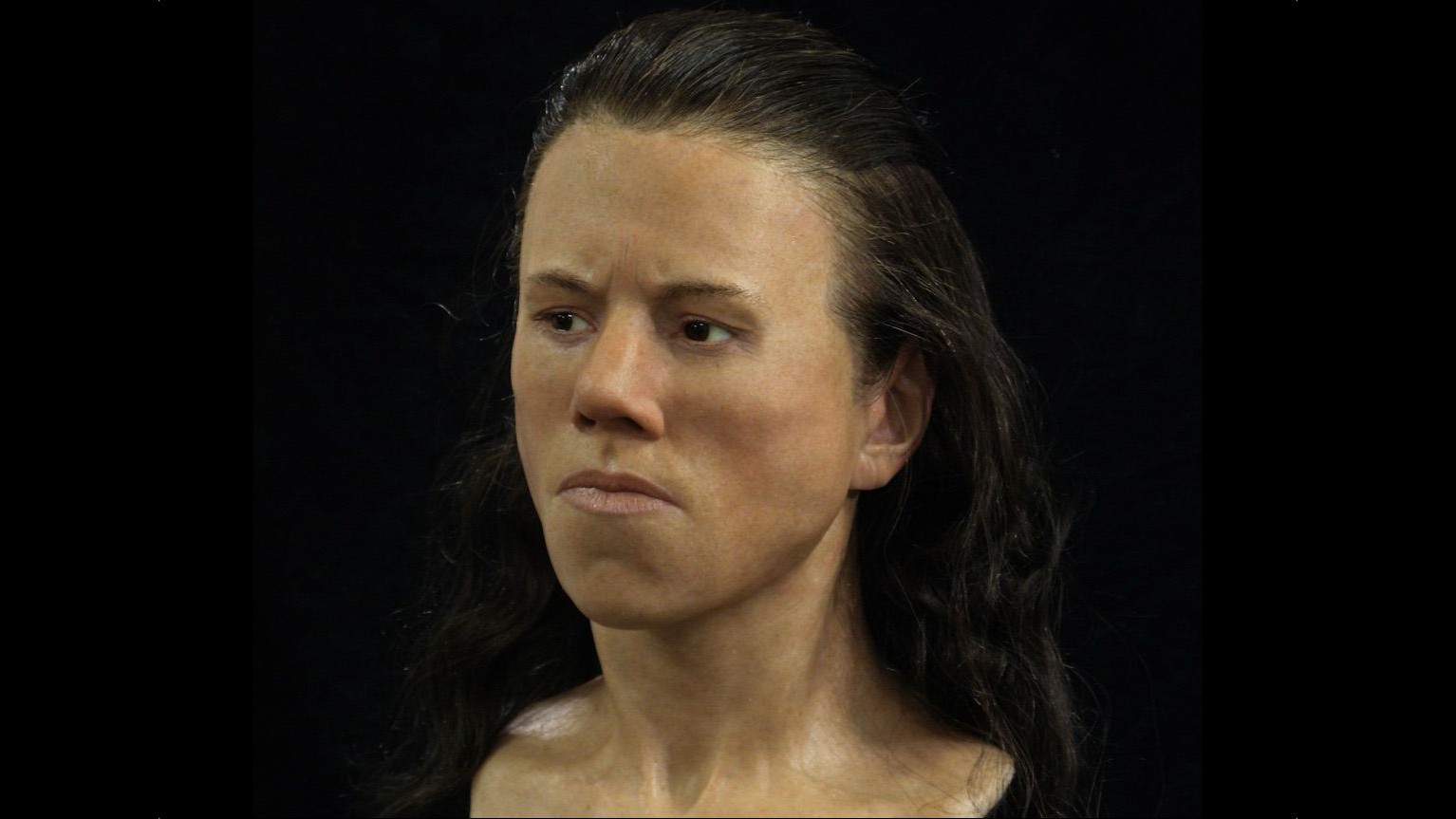
Swedish sculptor Oscar Nilsson spent around 220 hours meticulously recreating each individual muscle of Avgi's face. Not much is known about 18-year-old Avgi's life, just that her bones were found in a cave in central Greece and are around 9,000 years old.
33. Young Egyptian child

Scientists in Austria and Germany wanted to find out how accurate "mummy portraits" — images of people affixed to the front of their mummies — really were, so the researchers CT-scanned a boy's mummy, which was found in a cemetery close to the pyramid of Hawara, southwest of Cairo, Egypt. Using this information, and analyzing previous X-rays, they discovered that the 3D digital image they created looked almost exactly like the painting, with the only difference being that the boy who lived between 50 B.C. to A.D. 100 looked slightly older in his portrait. Mummy portraits were a popular tradition among some Egyptians in Greco-Roman times, from about the first through the third centuries A.D.
34. Ancient 'Shaman' woman
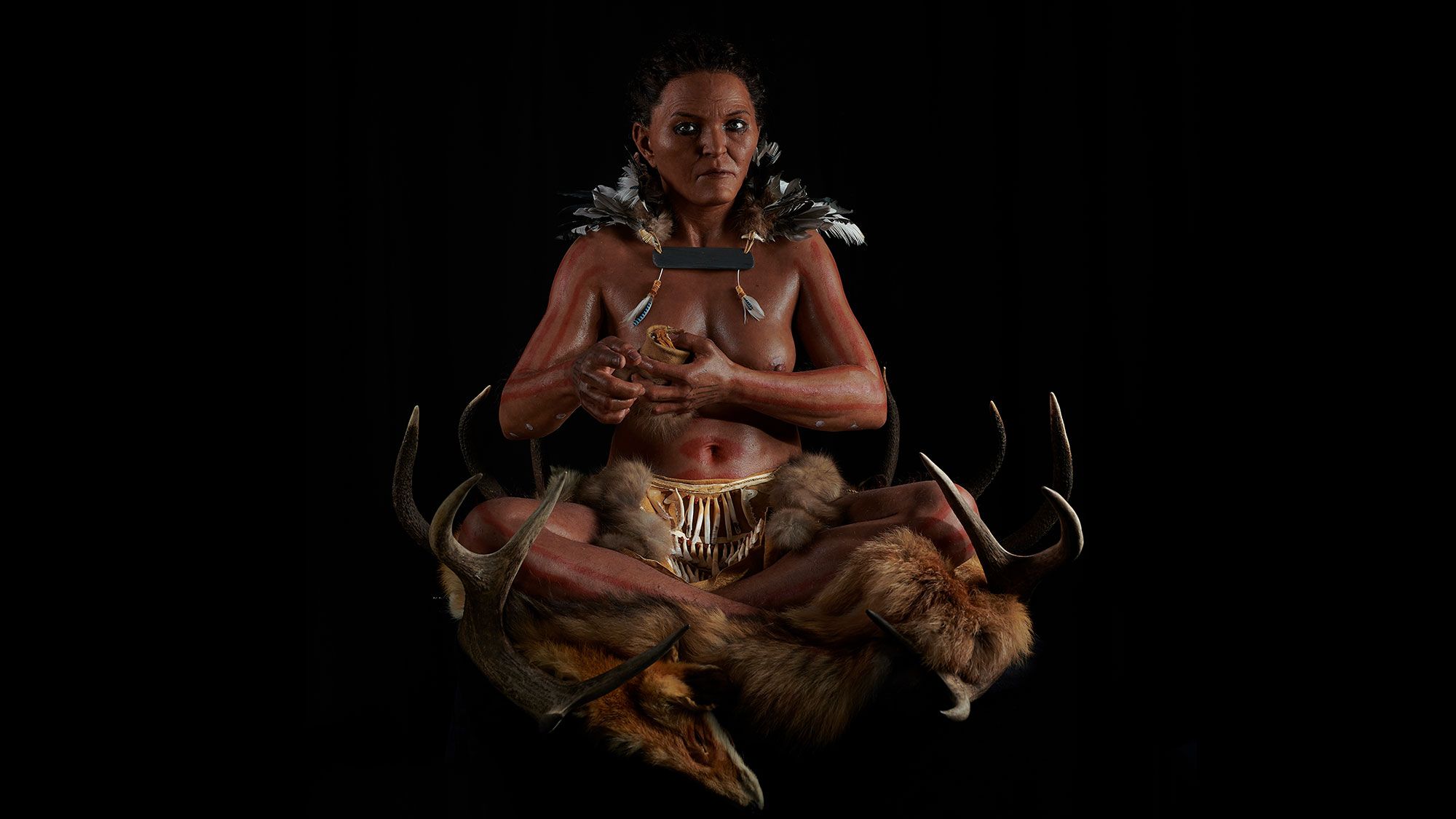
Found among other burials dating from 5,500 B.C. to 4,600 B.C., this hunter-gatherer woman was buried upright in a grave at Skateholm, an archaeological site on the south coast of Sweden. Sitting on a "throne" of deer antlers, the woman, who was 30 to 40 years old, was richly adorned and is thought to have been an important person.
35. Neanderthal woman from Gibraltar
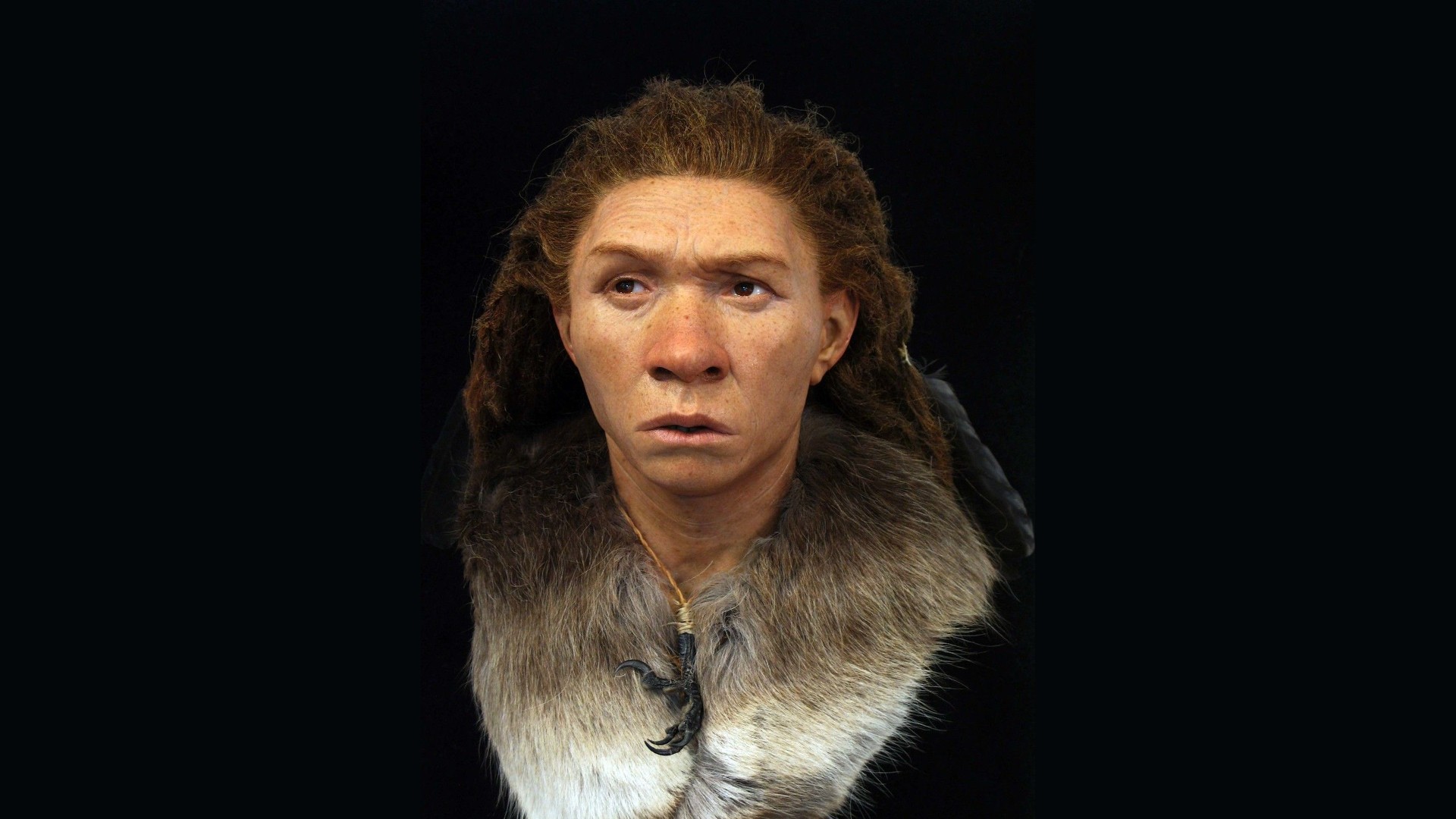
This hyper-realistic portrayal gives us a glimpse 40,000 years into the past. Here we see the face of a young Neanderthal woman, who was an early human inhabitant of Gibraltar. The 20-year-old woman was buried with a tiny baby resting on her chest, a sad clue that she likely died in childbirth during the Neolithic.
36. Whitehawk woman
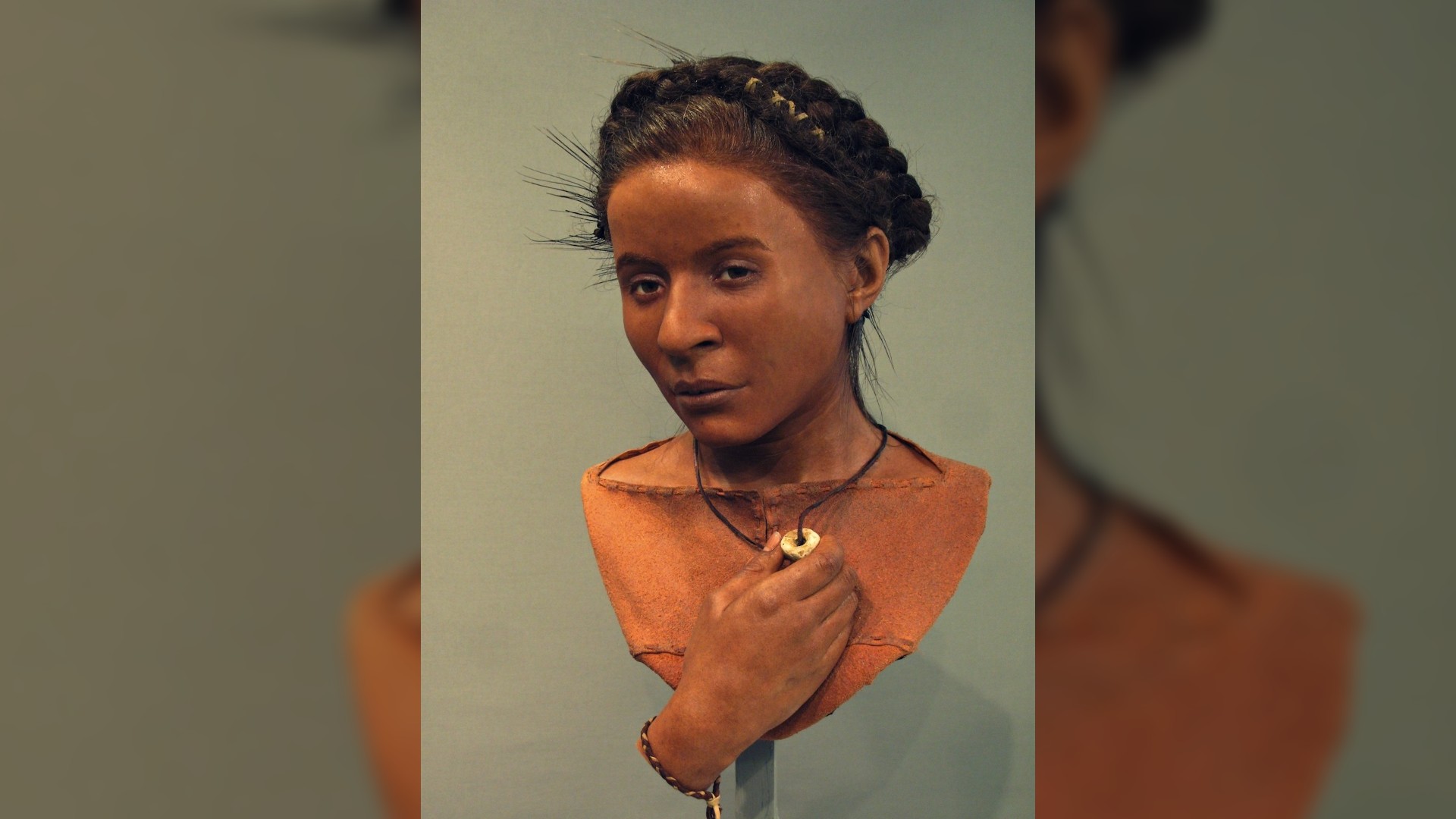
Named after Whitehawk in England, where she was found, Whitehawk woman lived about 5,500 years ago and appears to have died during childbirth. Standing 4 feet 9 inches (1.45 meters) tall, she was short, even for a Neolithic woman. She was buried with lucky charms believed to ward off evil.
37. Ötzi the Iceman
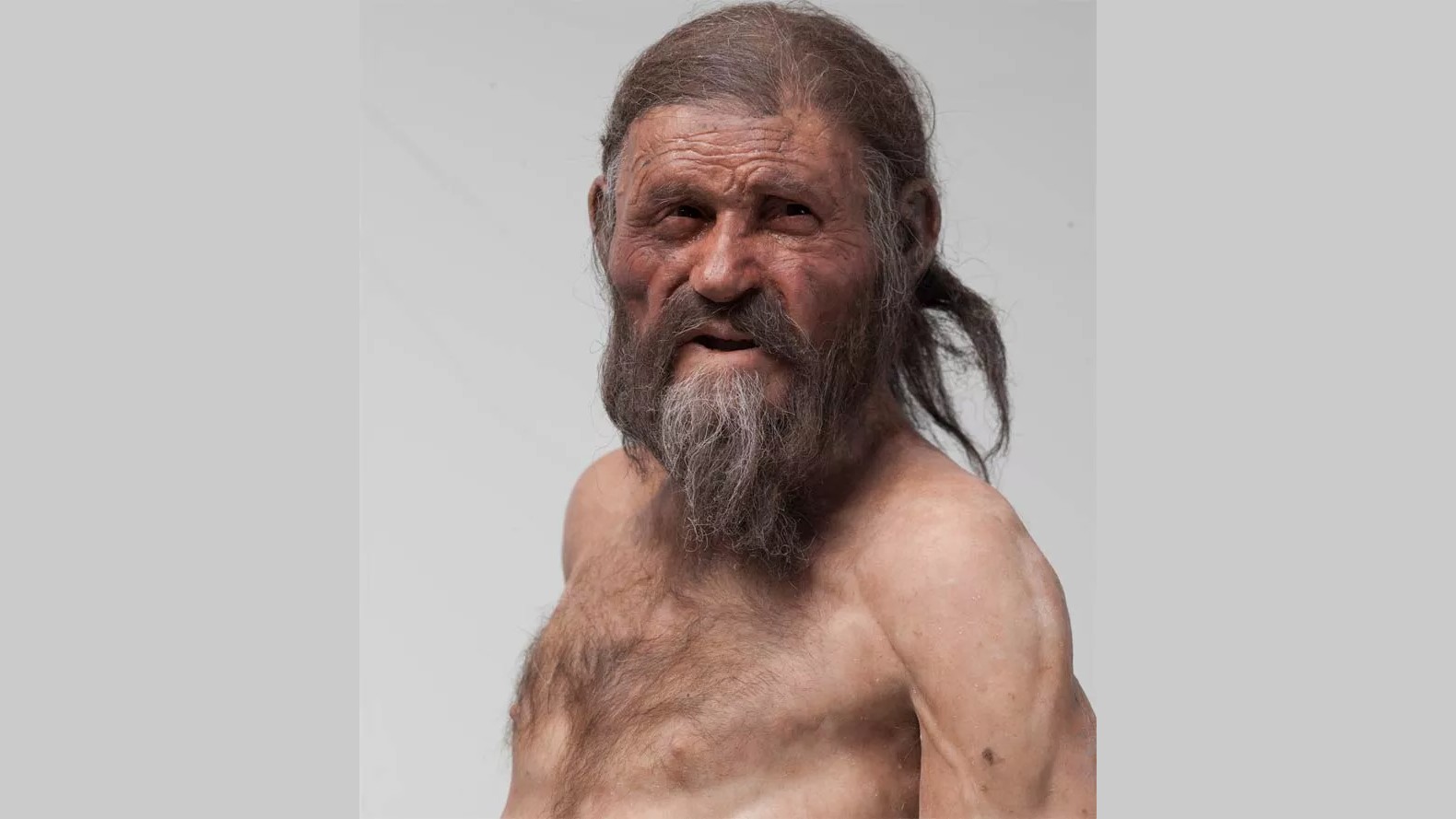
Ötzi the Iceman was discovered by hikers in the Ötztal Alps along the Austrian-Italian border. He lived sometime between 3350 and 3100 B.C. and died when he was around age 46 — a long life for a man in the Copper Age. The finished facial reconstruction shows a man with a long nose, deep-set eyes, and weathered skin and hair.
38. King Henry VII
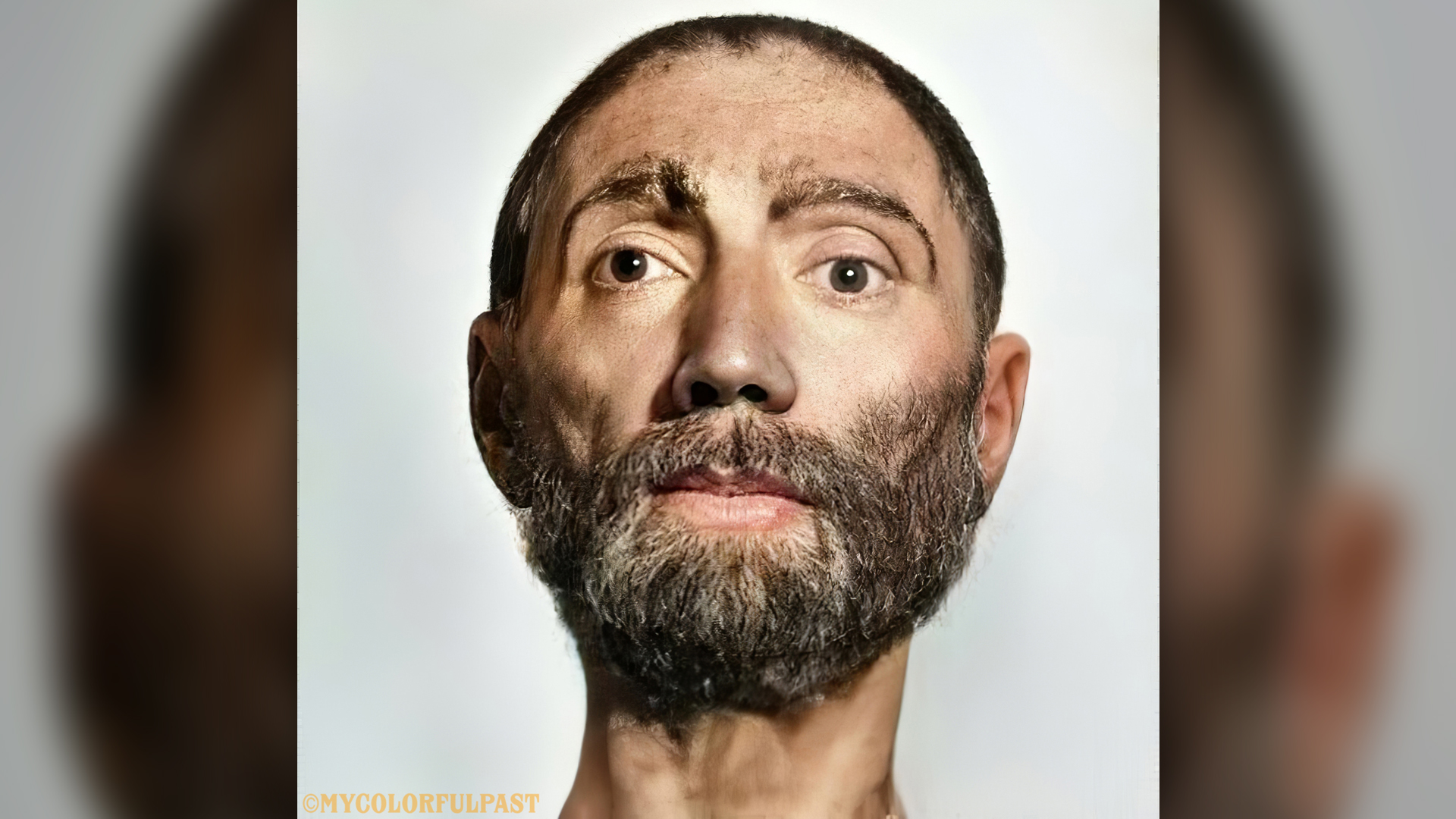
Thanks to photogrammetry, graphic artist Matt Loughrey was able to produce an astonishingly photorealistic reconstruction of England's King Henry VII, who died on April 21, 1509. Using the king's death mask — a wax mask from 1509 that preserved the likeness of the king — Loughrey brought this ruler's face back to life.
39. Hilda the Druid
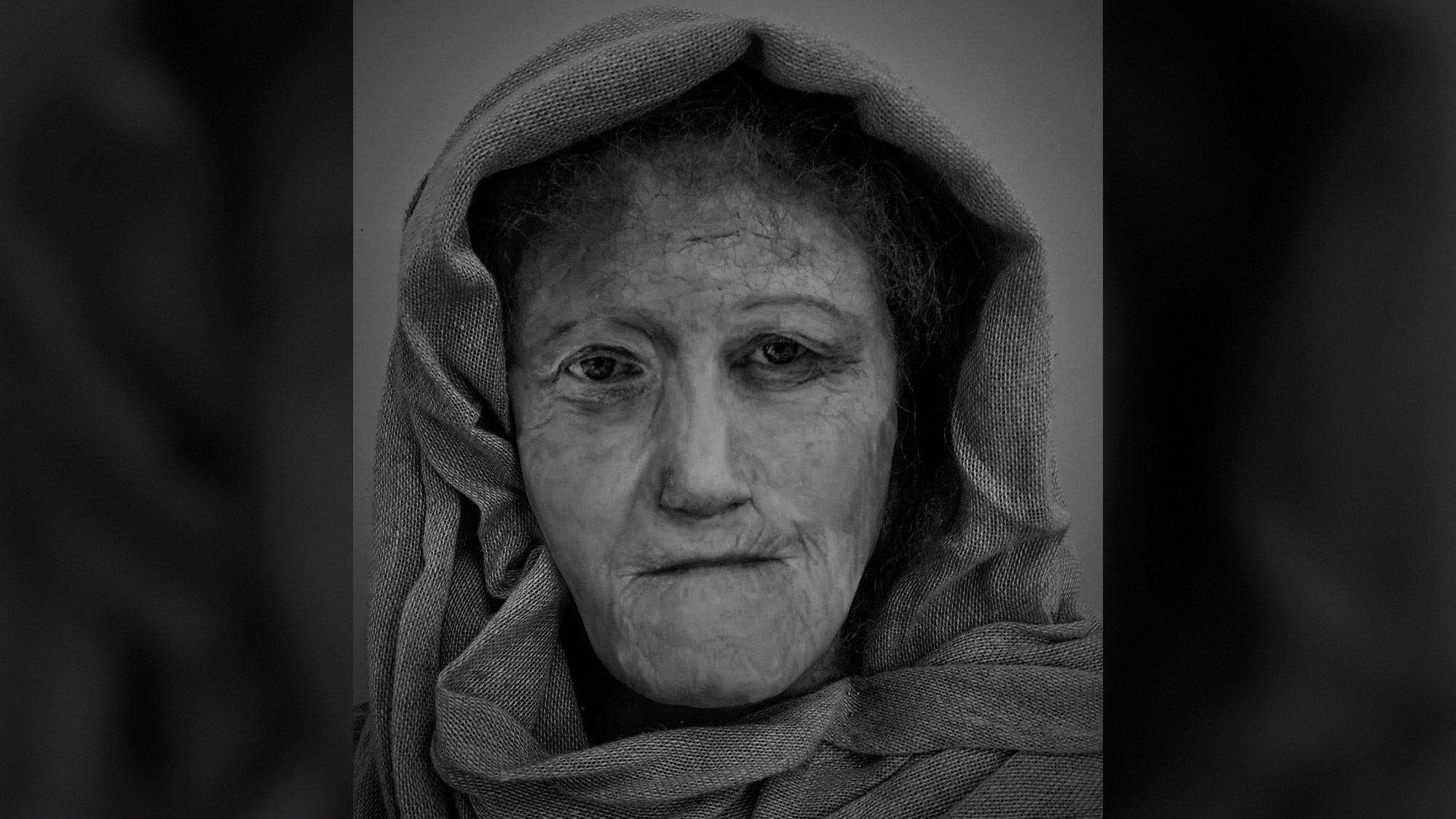
One of Scotland's oldest known Druids, "Hilda" lived during the Iron Age and is thought to have died sometime between 55 B.C. and 400 A.D. Her toothless skull and remains were found off the northern coast of Scotland at Stornoway, on the Isle of Lewis. This reconstruction is a wax re-creation of her face, showcasing gnarled wrinkles and a seemingly intense determination.
40. Bodies in the bog

Buried alongside eight other adults and five infants — now referred to as the "bodies in the bog" — this unfortunate medieval wanderer ended up in a mass grave in a former Roman-era latrine in Cramond, Scotland. Researchers used isotope analysis on the bones and teeth of the skeletons to discover that several of the individuals had traveled from far-flung corners of Scotland. Research also showed that several of the people had died violent deaths.
41. Blair Atholl Man
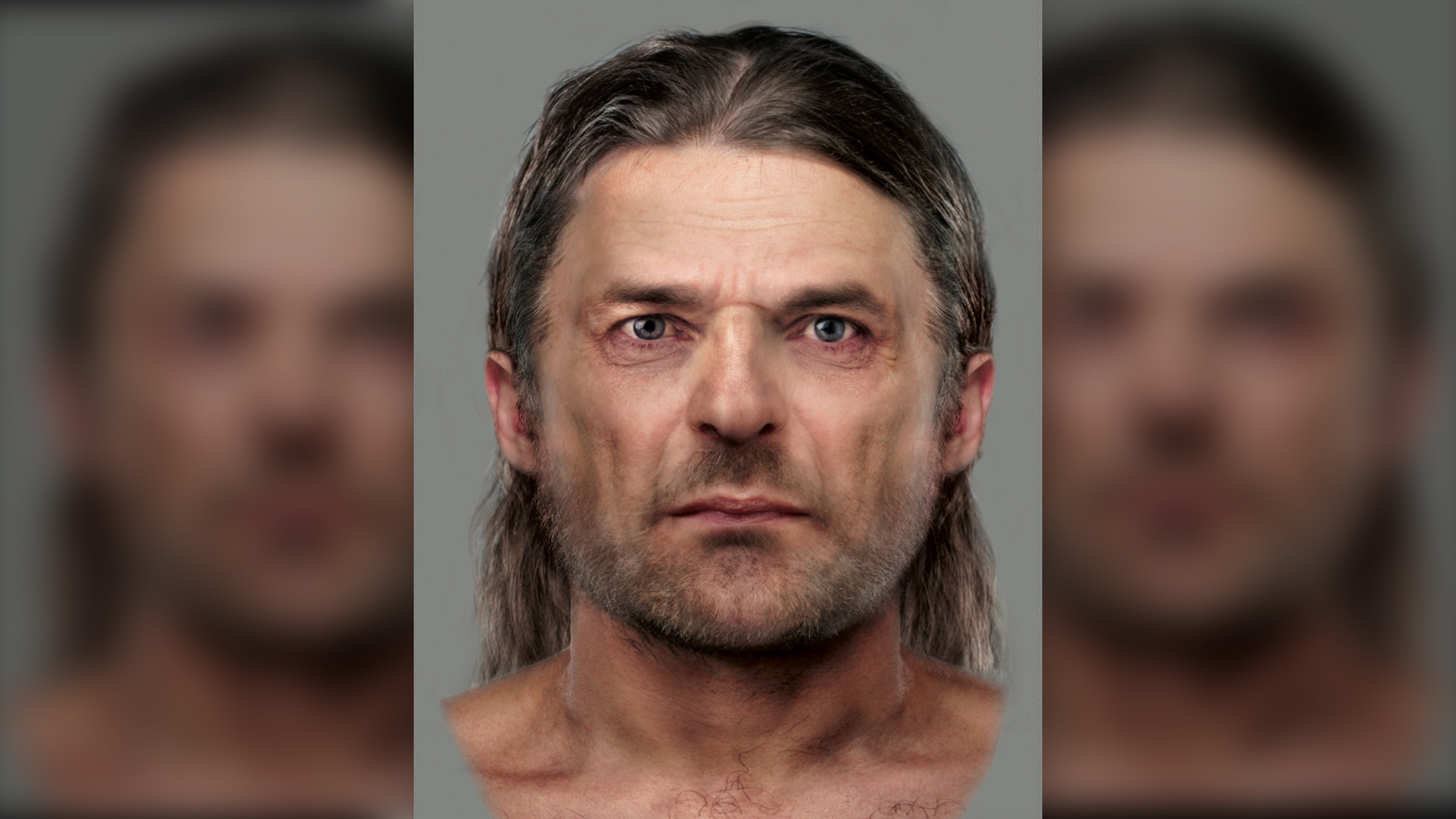
Named the Blair Atholl Man because his remains were discovered near Blair Atholl in the Scottish Highlands, this medieval man lived around 1,600 years ago, between A.D. 400 and 600. However, recent research found he was not actually local to the area. Chemical analysis revealed that he had elevated sulfur isotope ratios, which led researchers to believe he spent the majority of his later life elsewhere, near a coastal location, so was likely a newcomer to the location where he died.
42. King Richard III
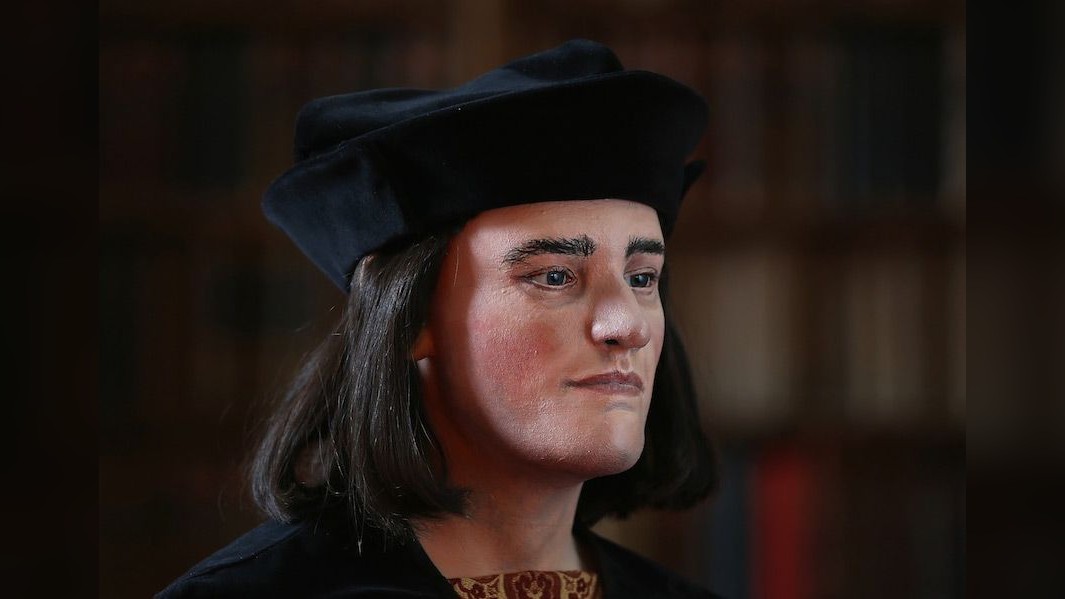
Unlike William Shakespeare's portrayal of King Richard III as a sneering villain, this reconstruction of the monarch shows a much kinder face, although of course it's not possible to tell someone's character just by their looks. King Richard III's bones were unearthed beneath a parking lot in Leicester, England. Archaeological evidence suggests that after his death in 1485, his body was beaten before a hasty burial.
43. Ancient Wari queen
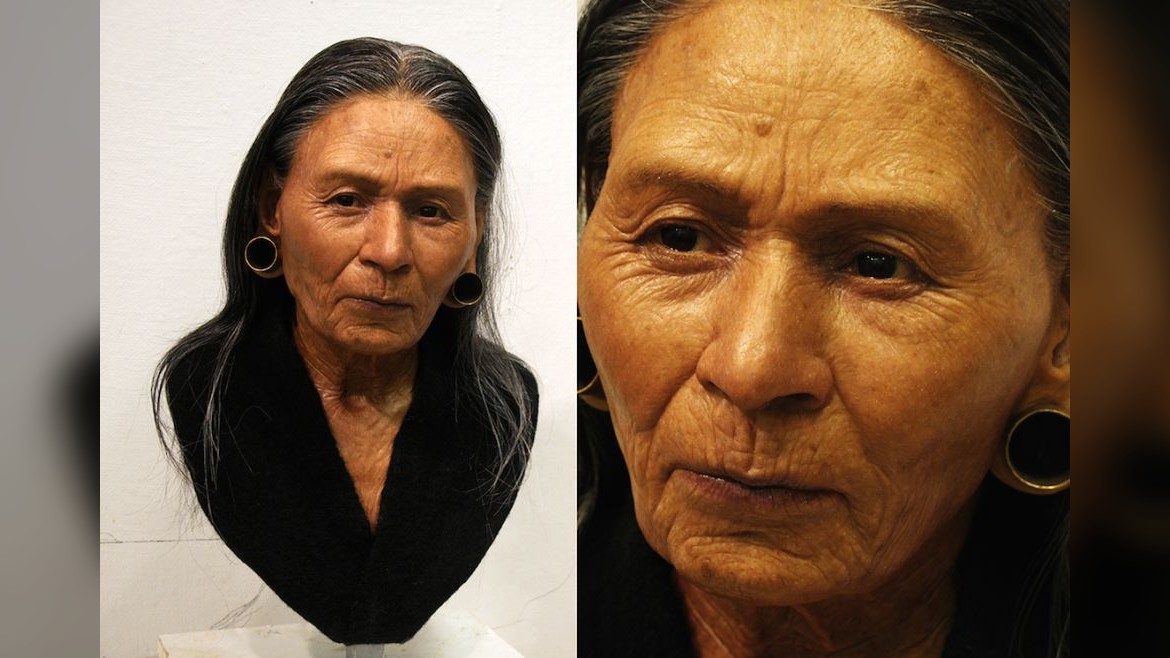
The skull of a Wari queen who lived about 1,200 years ago was discovered among numerous lavish artifacts in a pyramid mausoleum known as El Castillo de Huarmey, located in north Lima, Peru. The Wari queen was buried in a private chamber, while the rest of the tomb held the remains of 58 noblewomen. They were part of the Wari culture, which thrived in the region from A.D. 700 to 1,000. The reconstruction was crafted from modeling clay and was based on the queen's skull.
44. Denisovan woman
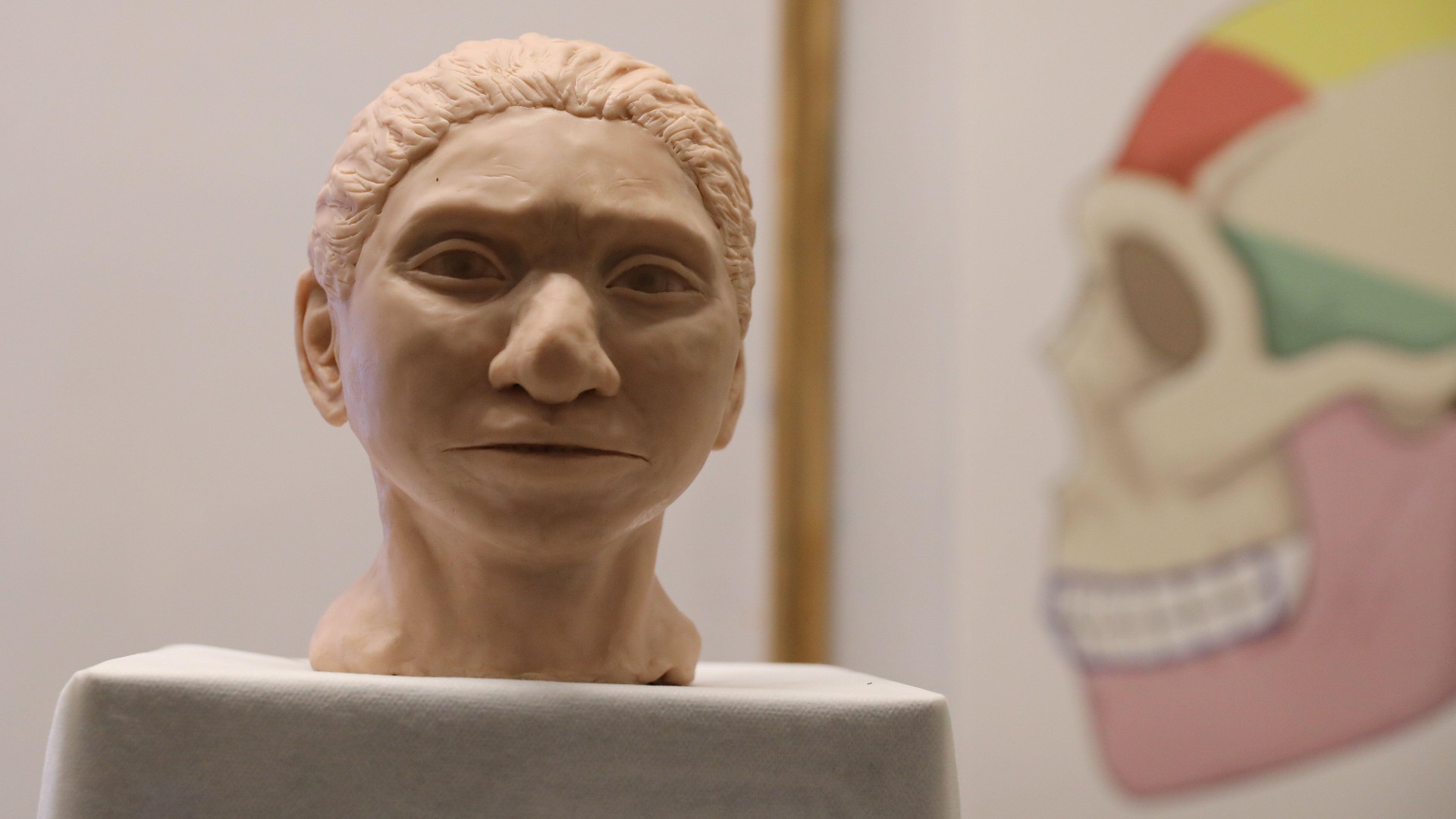
Denisovans are a mysterious group of now-extinct humans who lived as far back as 200,000 years ago. Thanks to DNA from a severed pinky bone found in a cave in Siberia, researchers were able to reconstruct the first plausible portrait of a Denisovan girl from 40,000 years ago. By making a map that showed how chemical changes to gene expression could influence physical traits, researchers deduced that Denisovans had wider heads and longer dental arches than Neanderthals or modern humans.
45. Cro-Magnon man
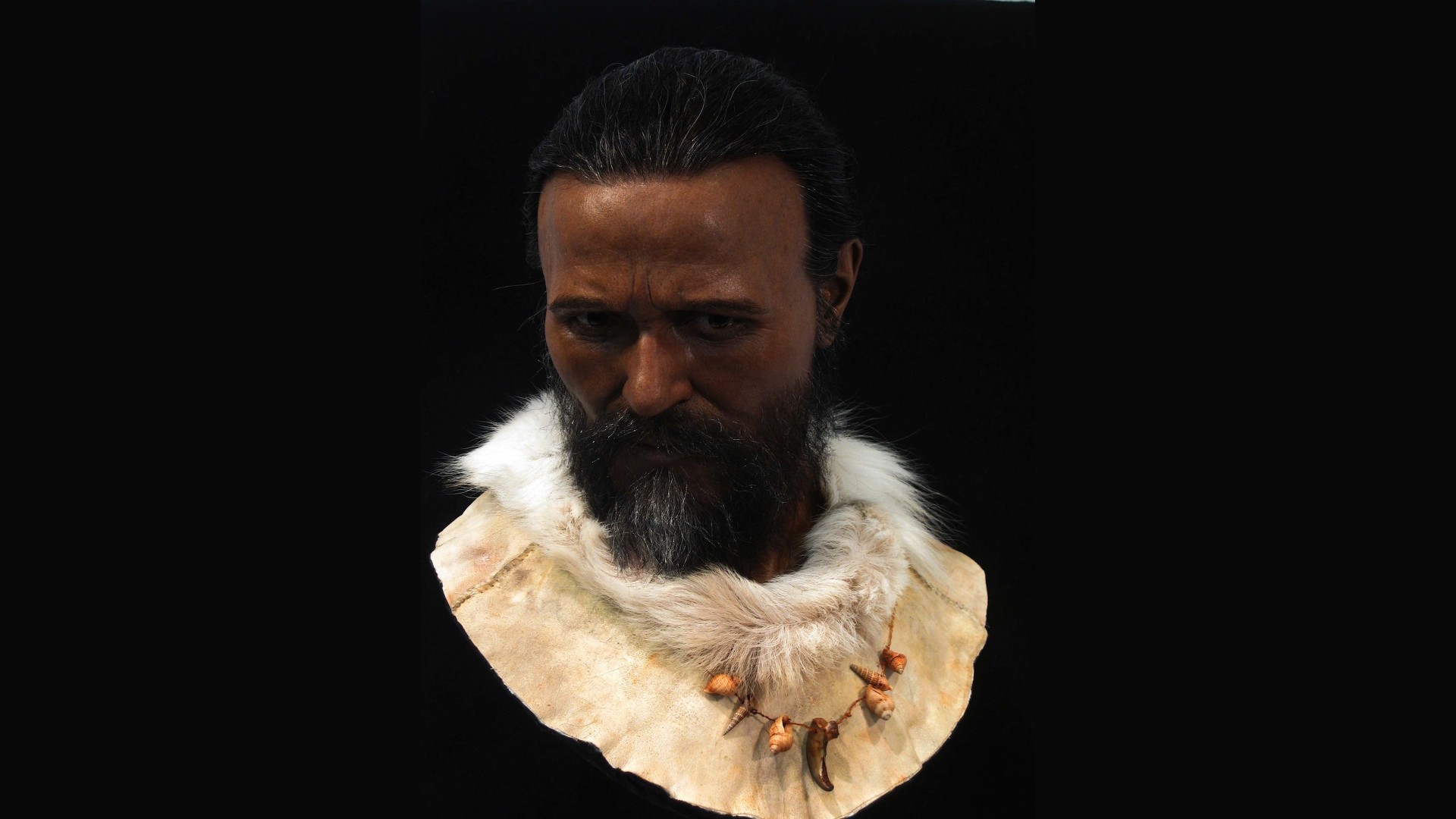
During the upper Paleolithic period, about 40,000 to 10,000 years ago, Europe was inhabited by Homo sapiens known as the Cro-Magnons. This reconstruction is based on a Cro-Magnon man who was found in France, but archaeological findings suggest these people likely lived in southern England too.
46. Slonk Hill Man
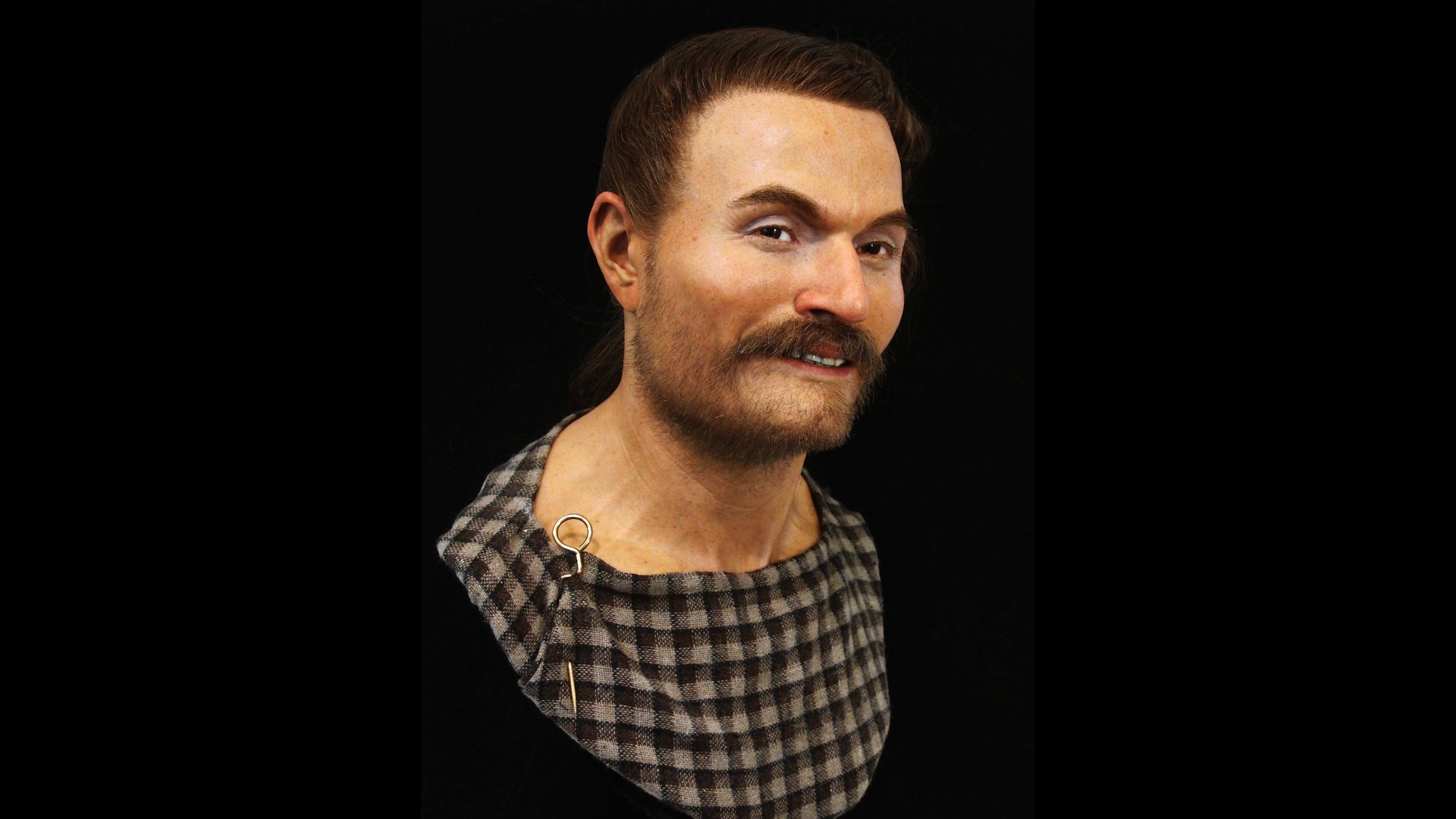
Found buried in a crouched position and laid upon a thick bed of barnacles and mussel shells, this Iron Age man was discovered not far from Brighton, U.K. Known as the Slonk Hill Man, he lived around 2,400 to 2,200 years ago.
47. Patcham Woman
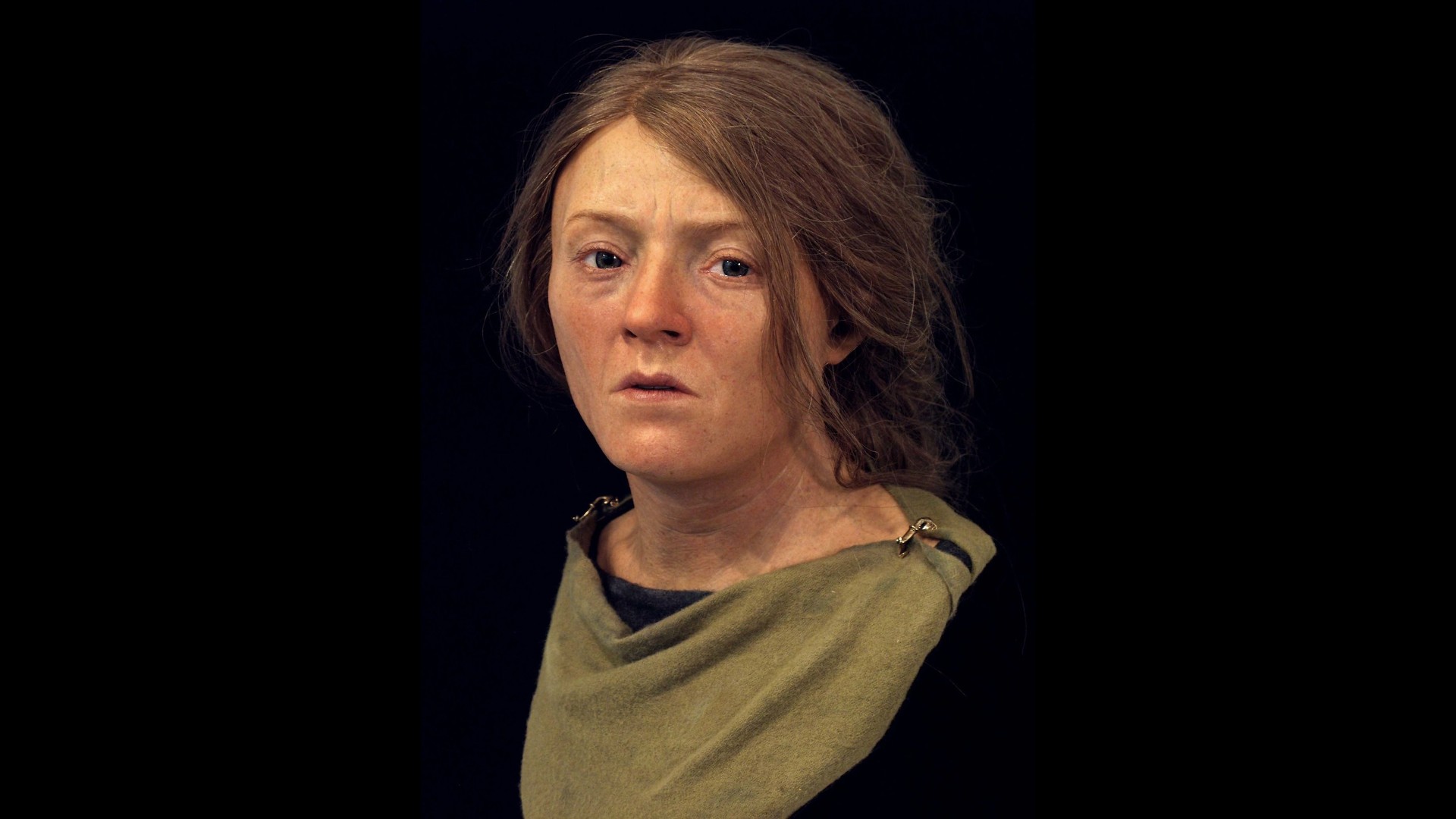
A skeletal analysis shows that the Patcham Woman, who was found in southern England, was between ages 25 and 35 and was most likely murdered. She was alive during the Romano-British era in about A.D. 250.
48. Stafford Road Man
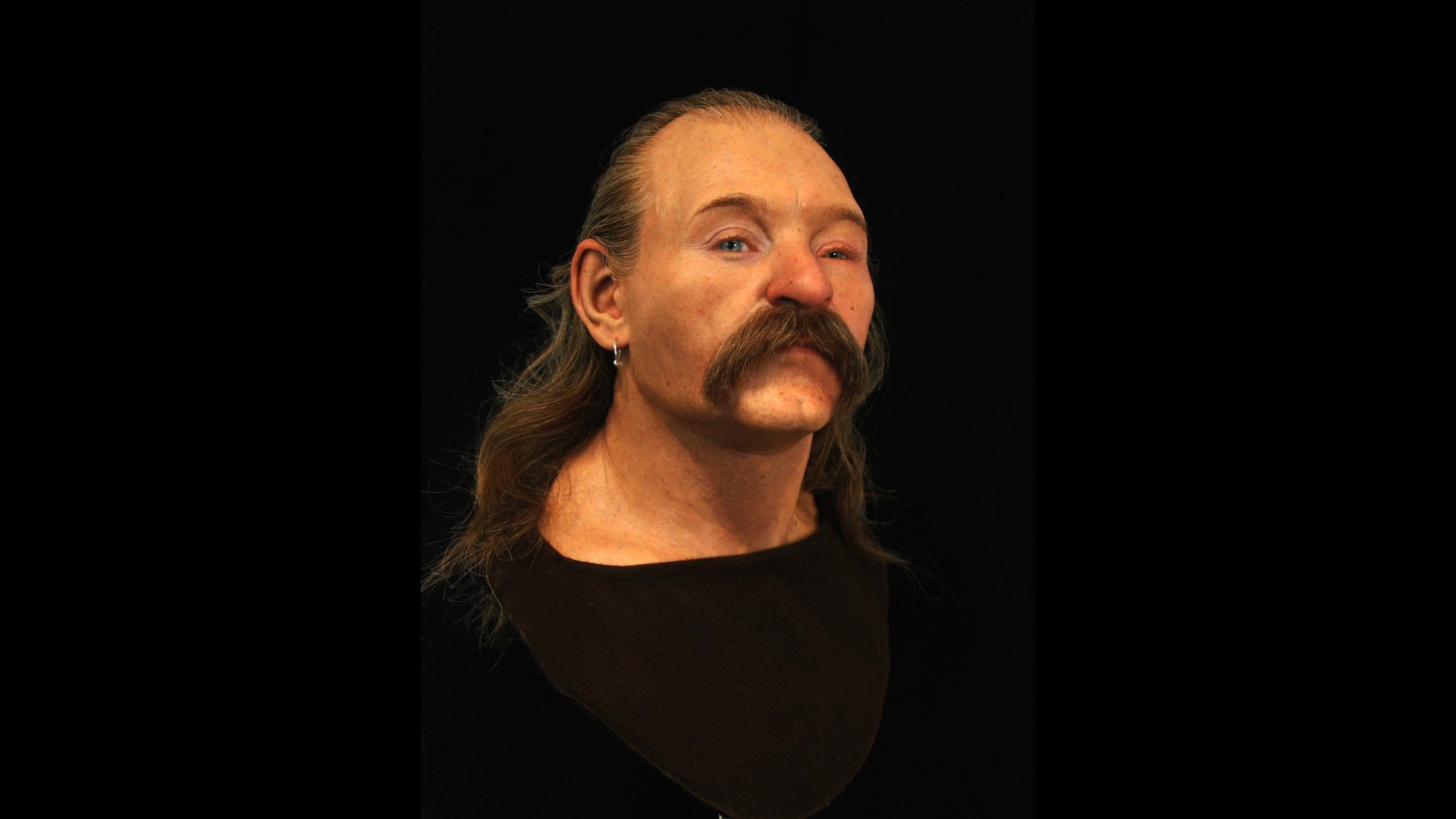
Robust and muscular, the Stafford Road Man lived during the Saxon times, about A.D. 500, and likely died from toothache complications. His grave, located in Brighton, England, contained several weapons, including a knife in his right hand, which indicates that he was likely a warrior.
49. Egyptian female mummy
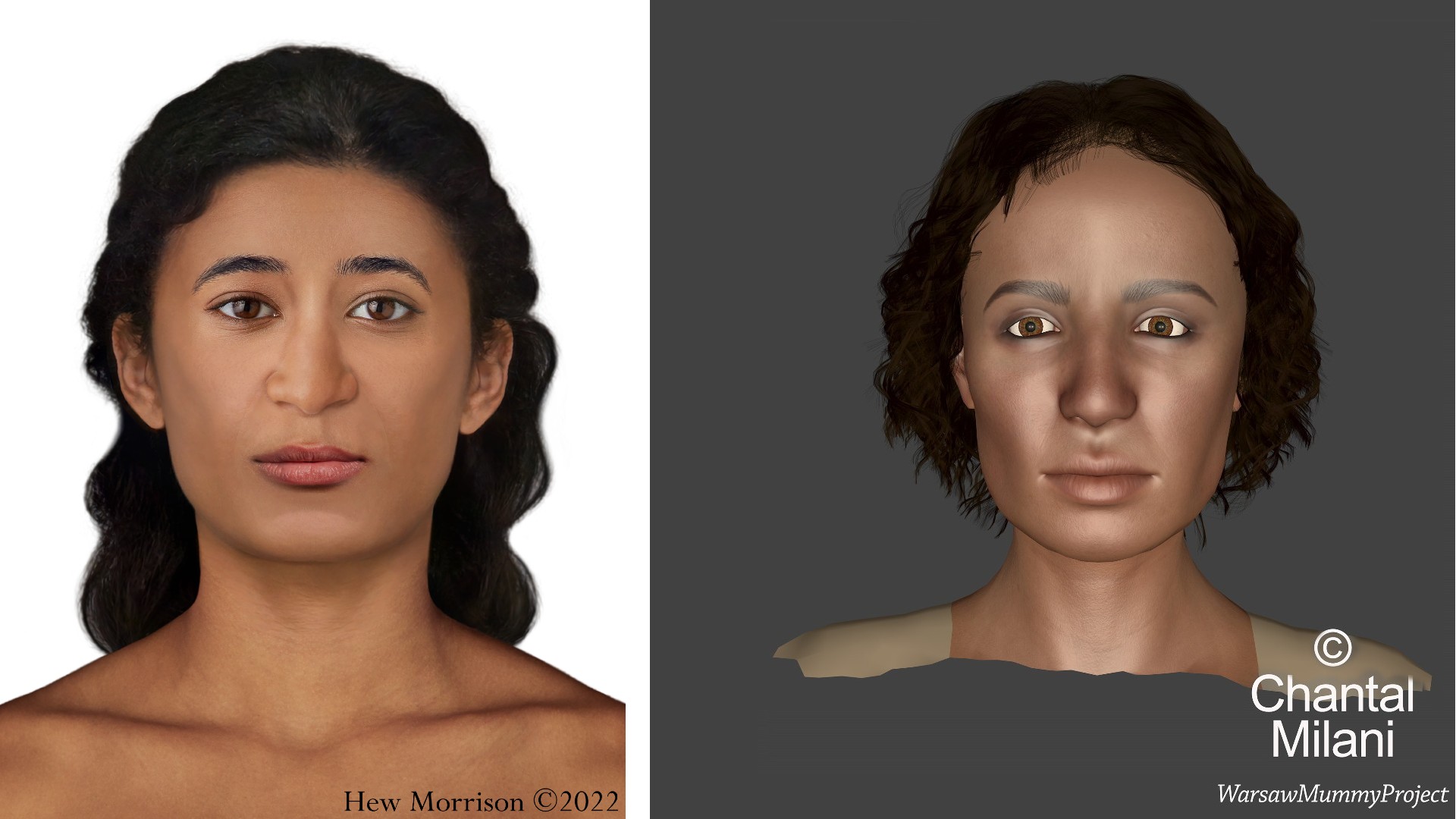
The mummy of an ancient Egyptian woman who may have been pregnant when she died has baffled archaeologists in search of clues about her identity. The Warsaw Mummy Project used non-invasive techniques such as CT and X-ray scans to determine what the mummy of the "Mysterious Lady" looked like beneath her bandages. They then had two forensic specialists, Hew Morrison and Chantal Milani, work independently to create facial reconstructions using different techniques, and compared the results.
50. Nazlet Khater 2 man
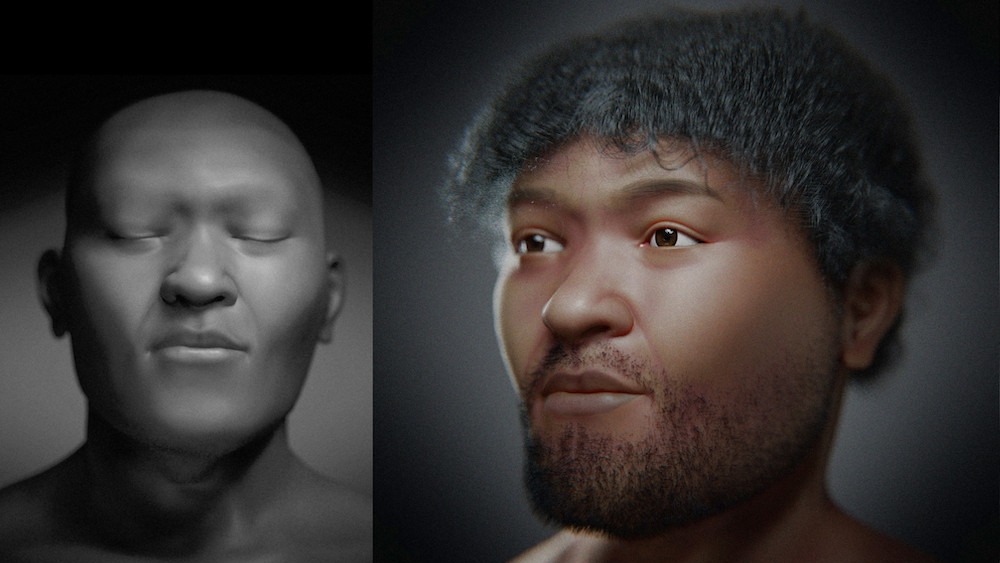
Archaeologists unearthed a man's skeletal remains at Nazlet Khater 2, an archaeological site in Egypt's Nile Valley. Anthropological analysis revealed that he was between 17 and 29 years old when he died 30,000 years ago and was of African ancestry. The skeleton is the oldest example of Homo sapiens remains found in Egypt. Researchers used photogrammetry to create a facial approximation.







